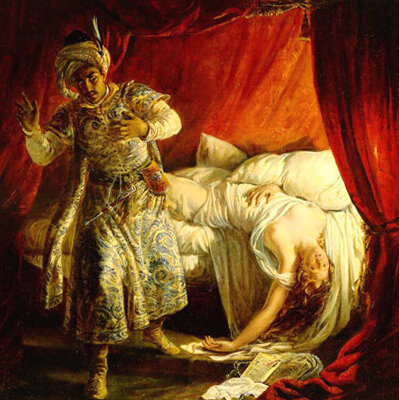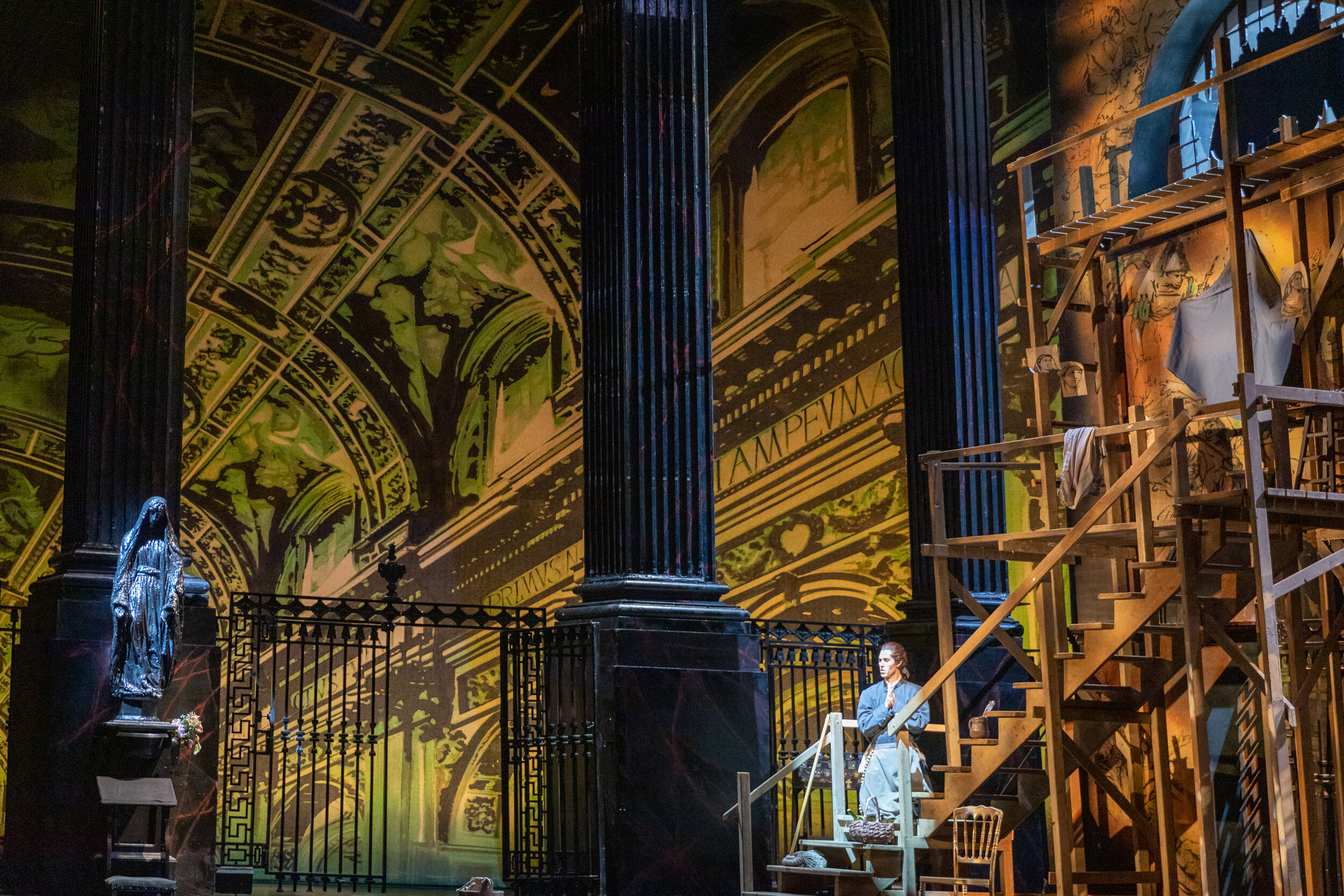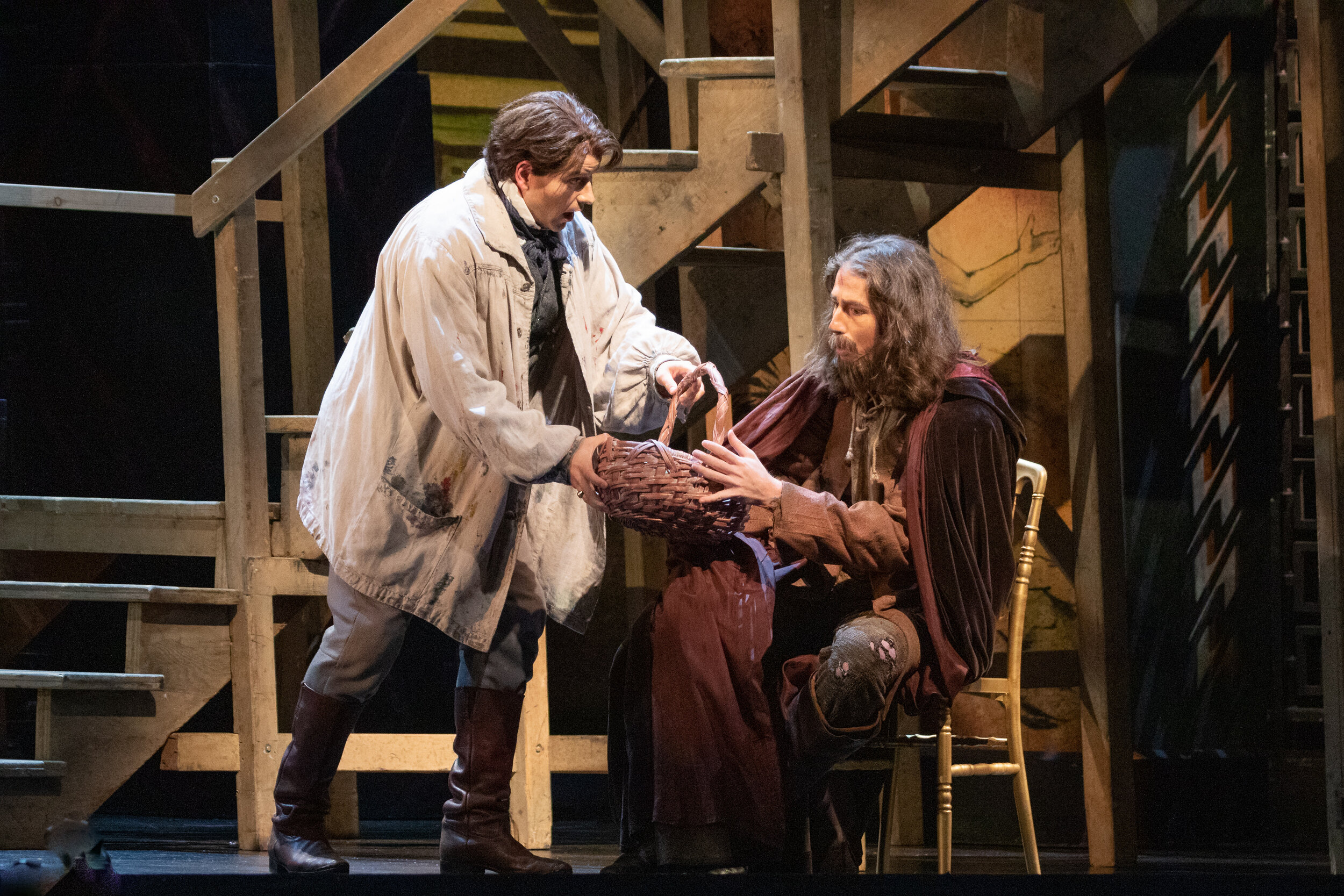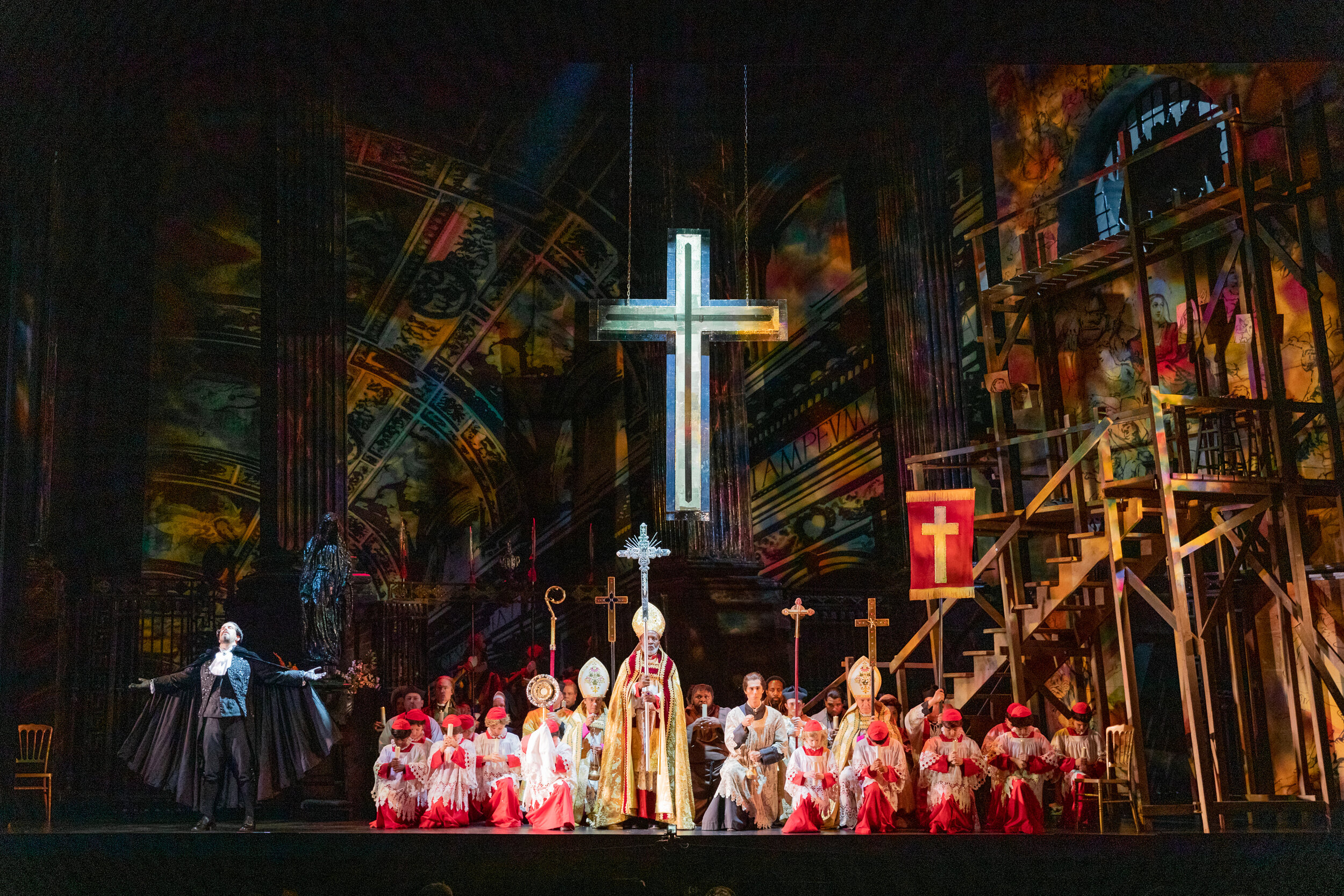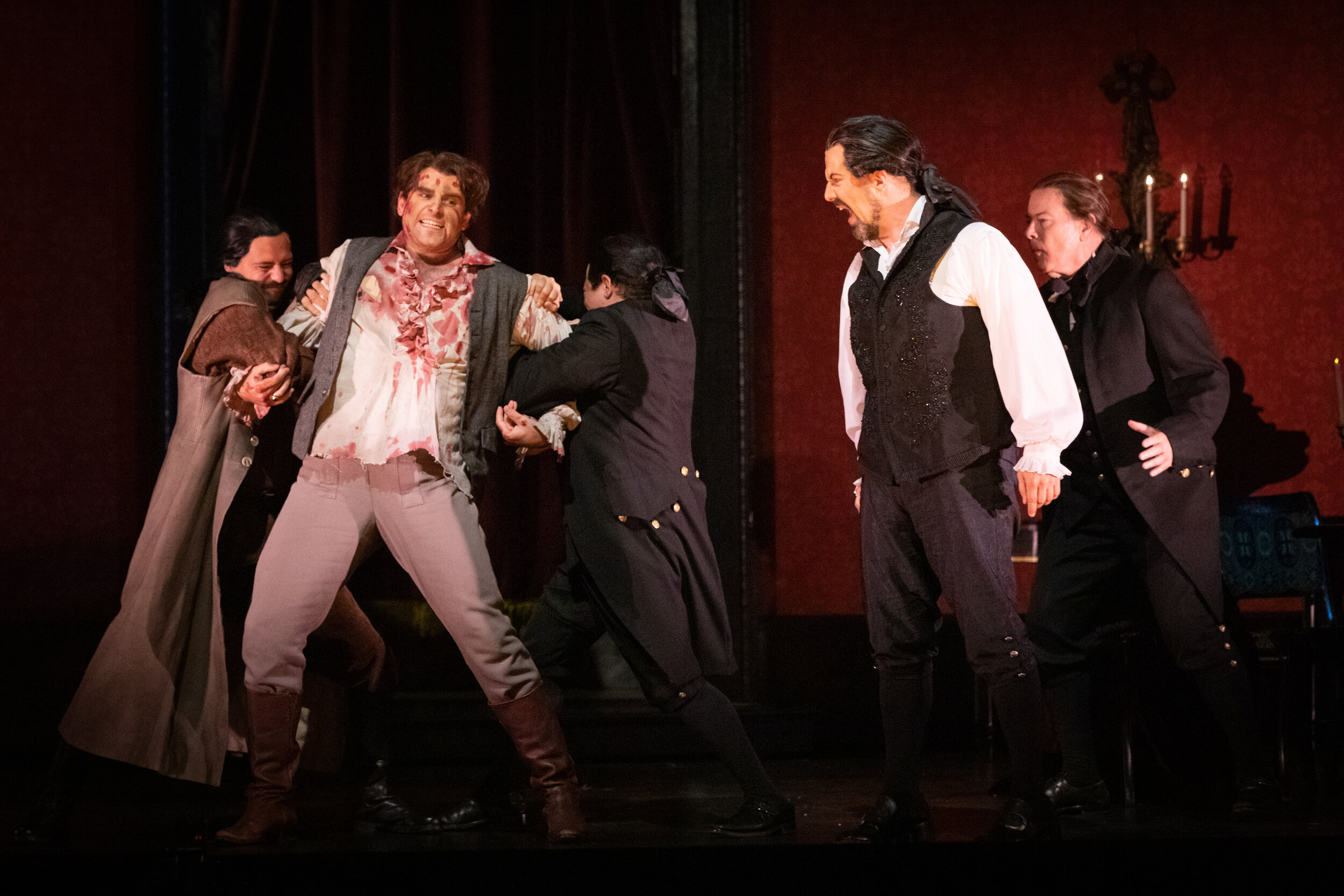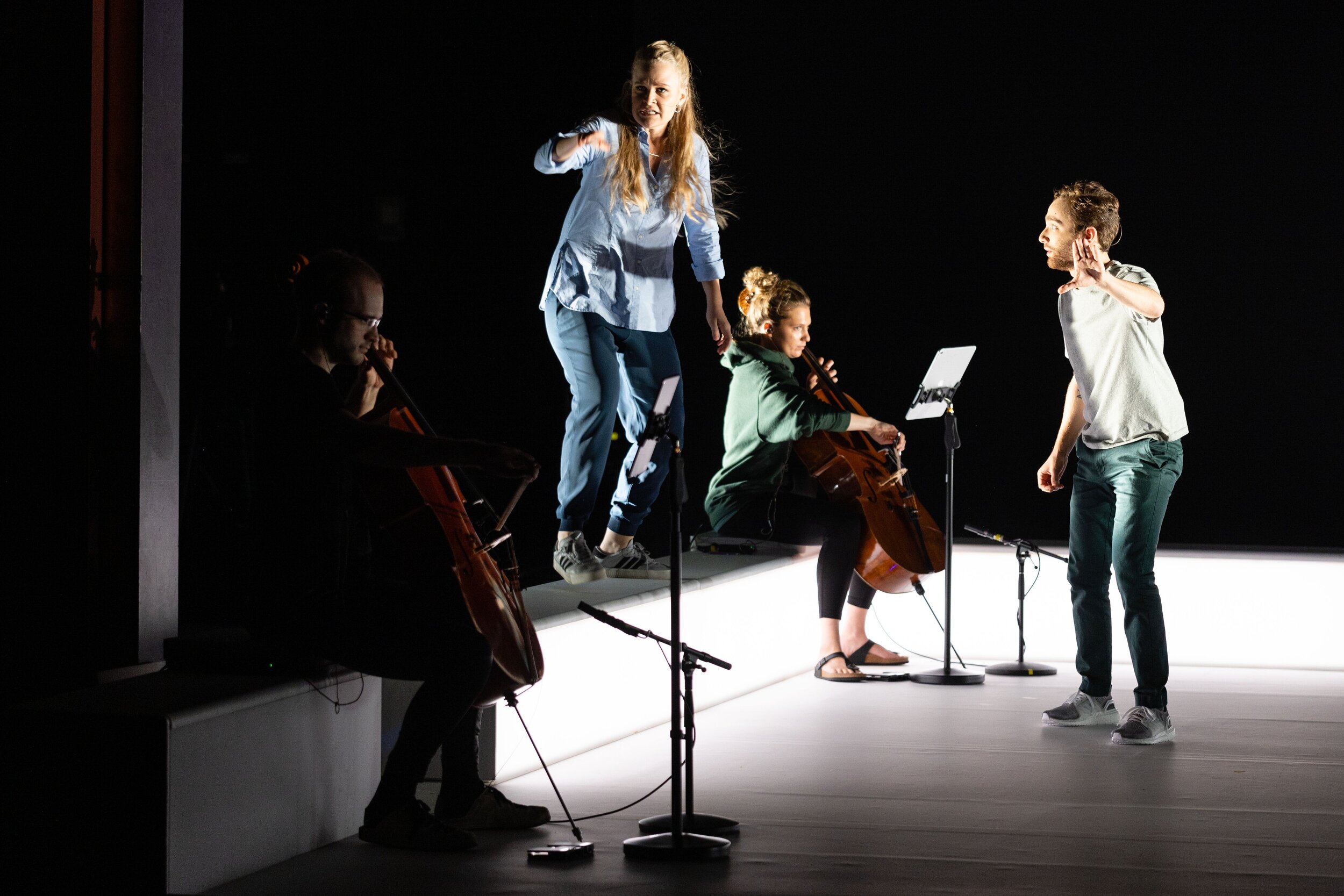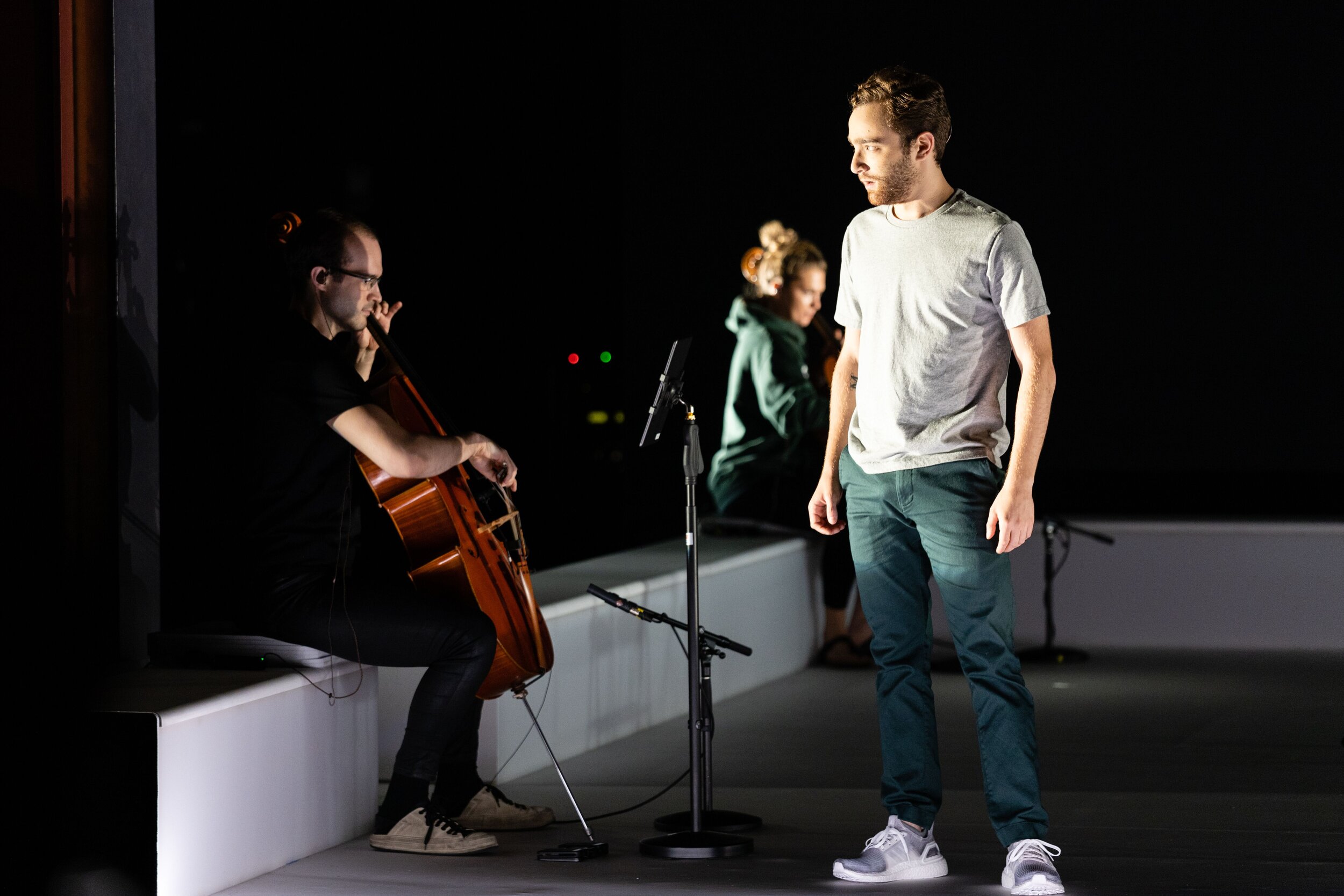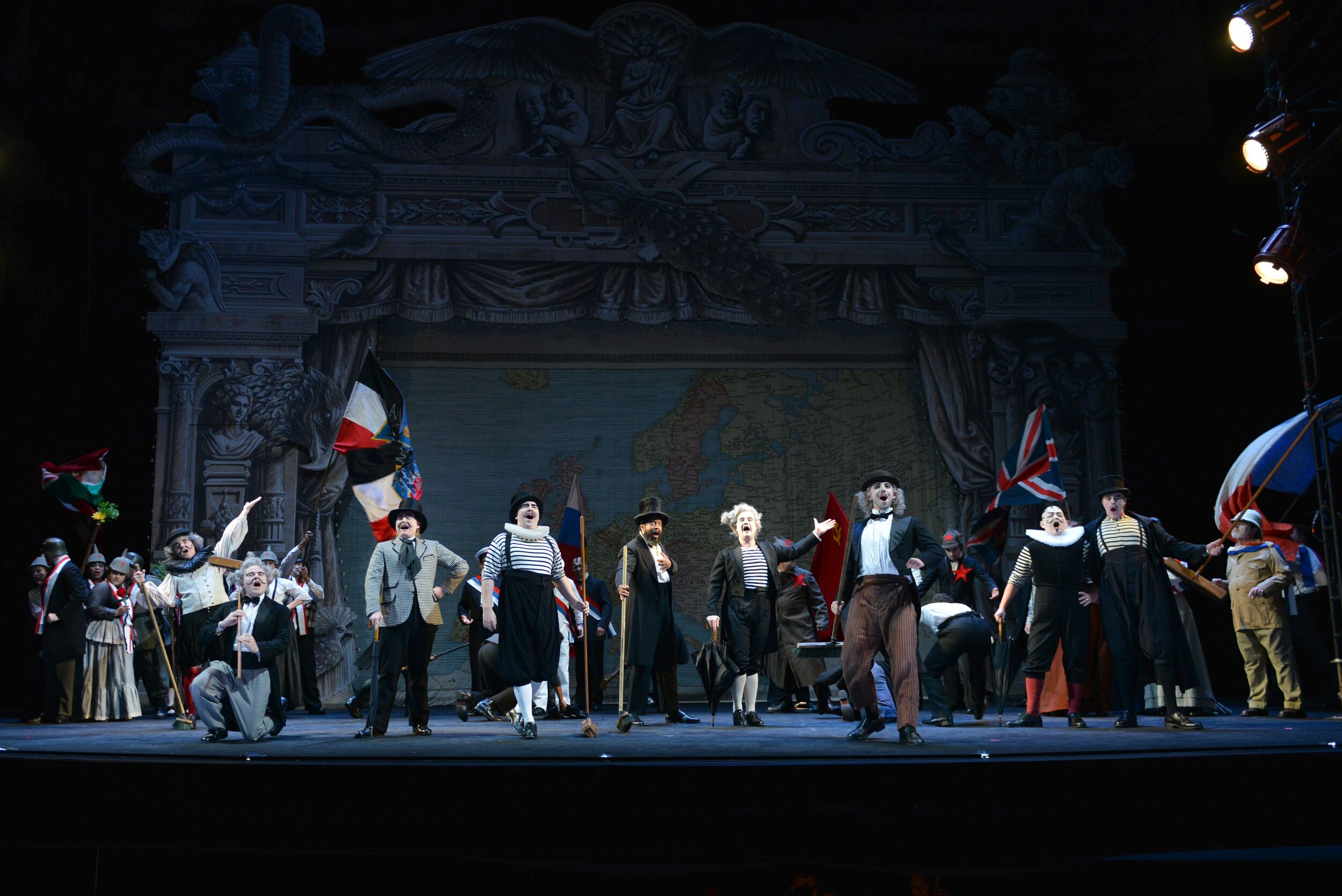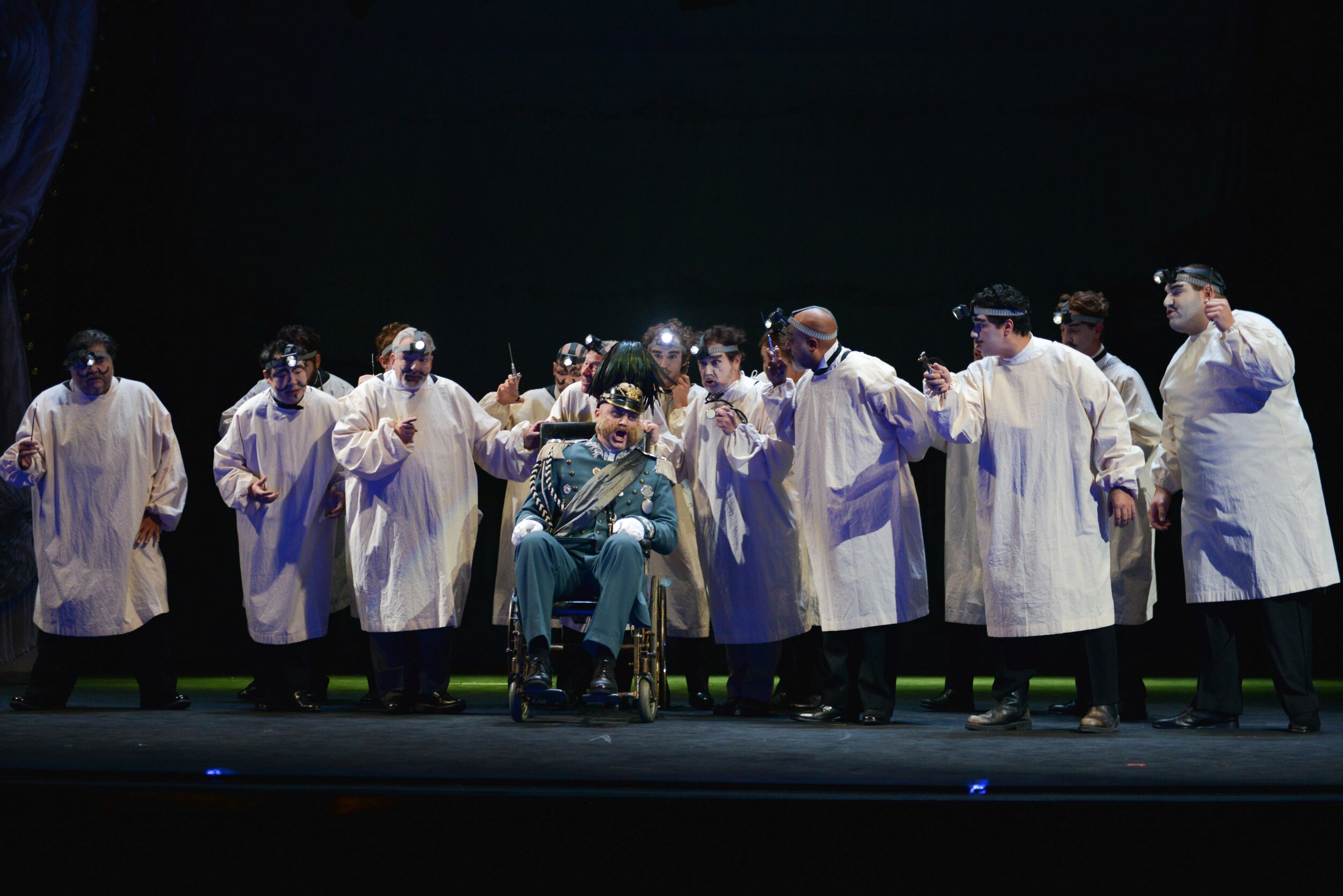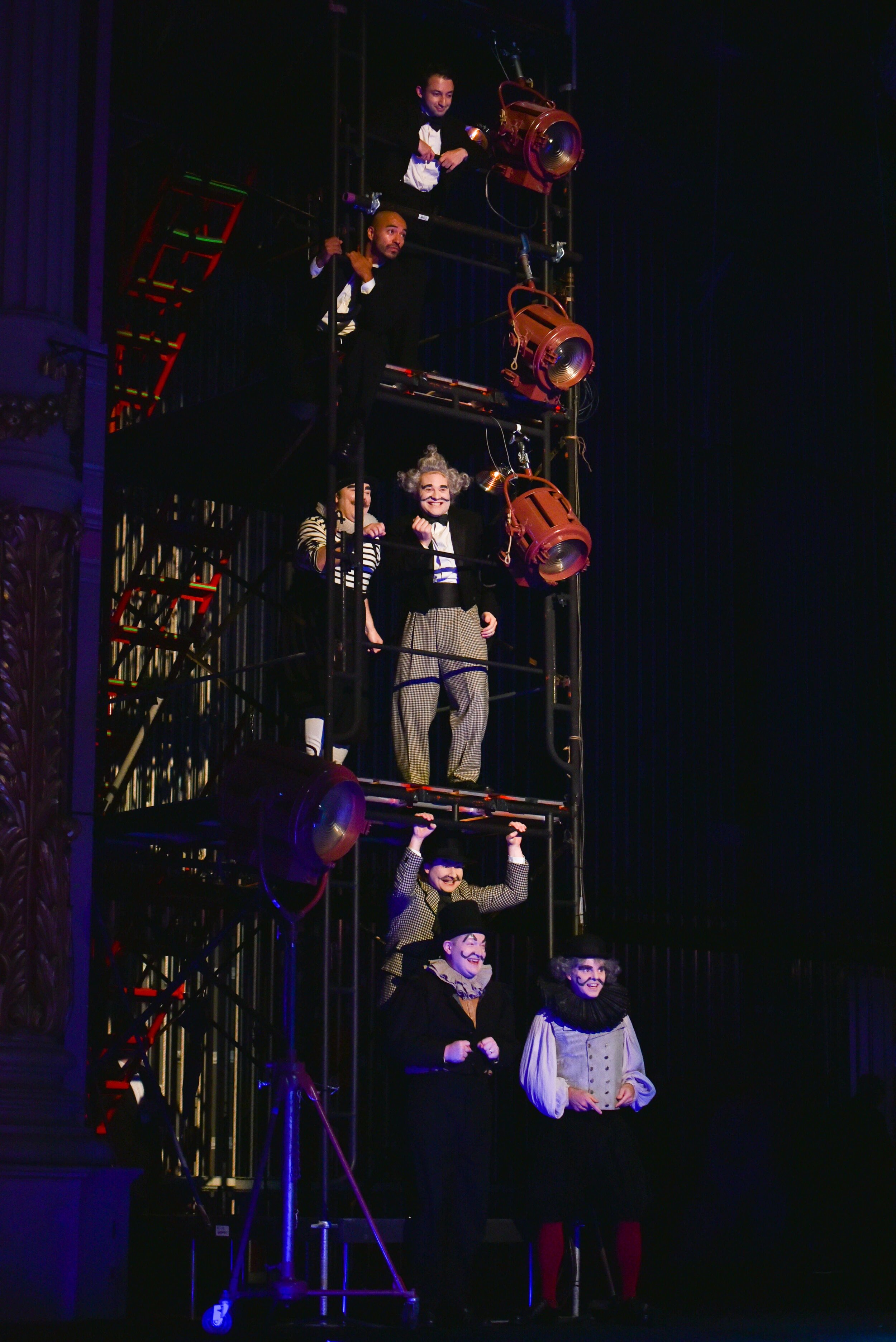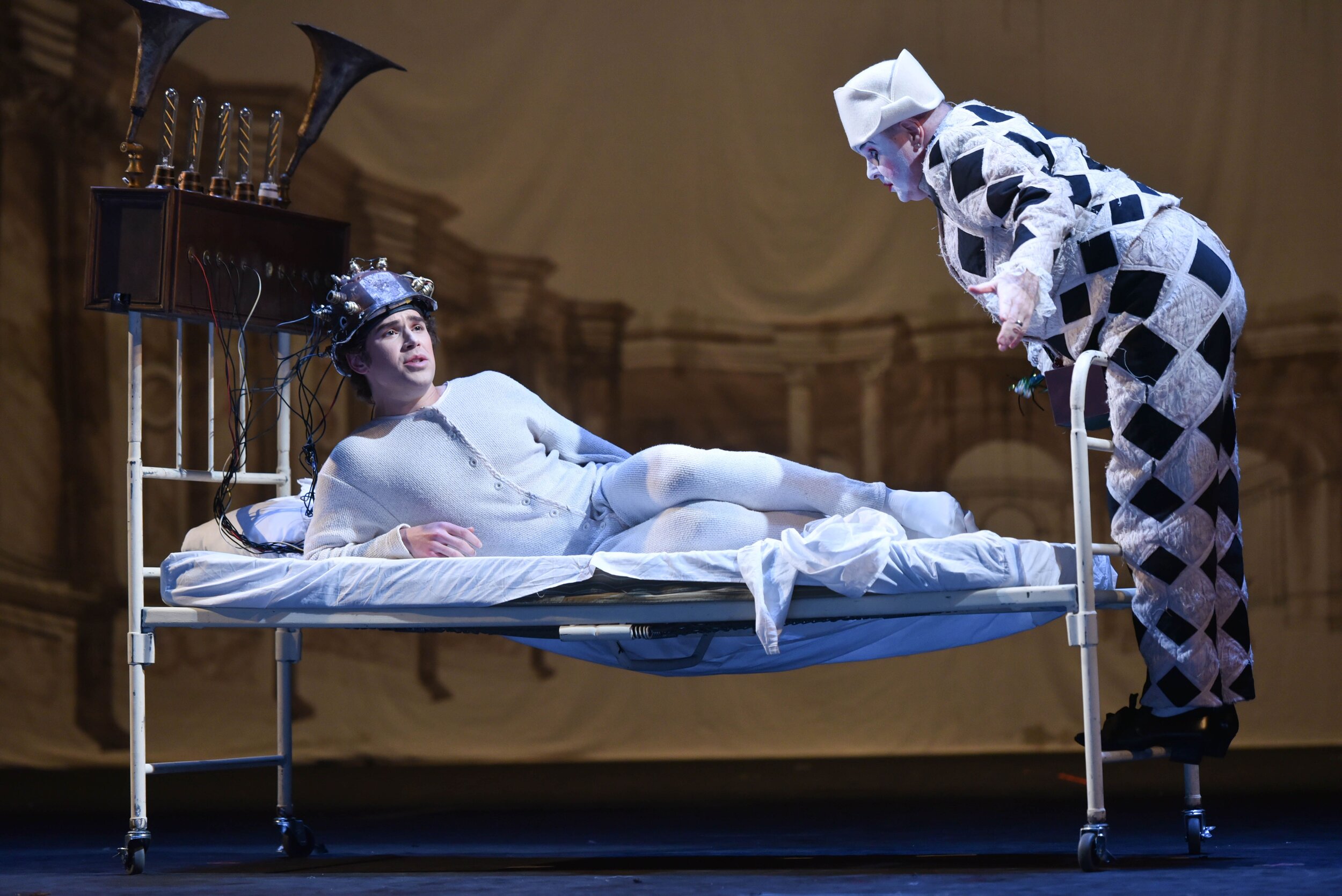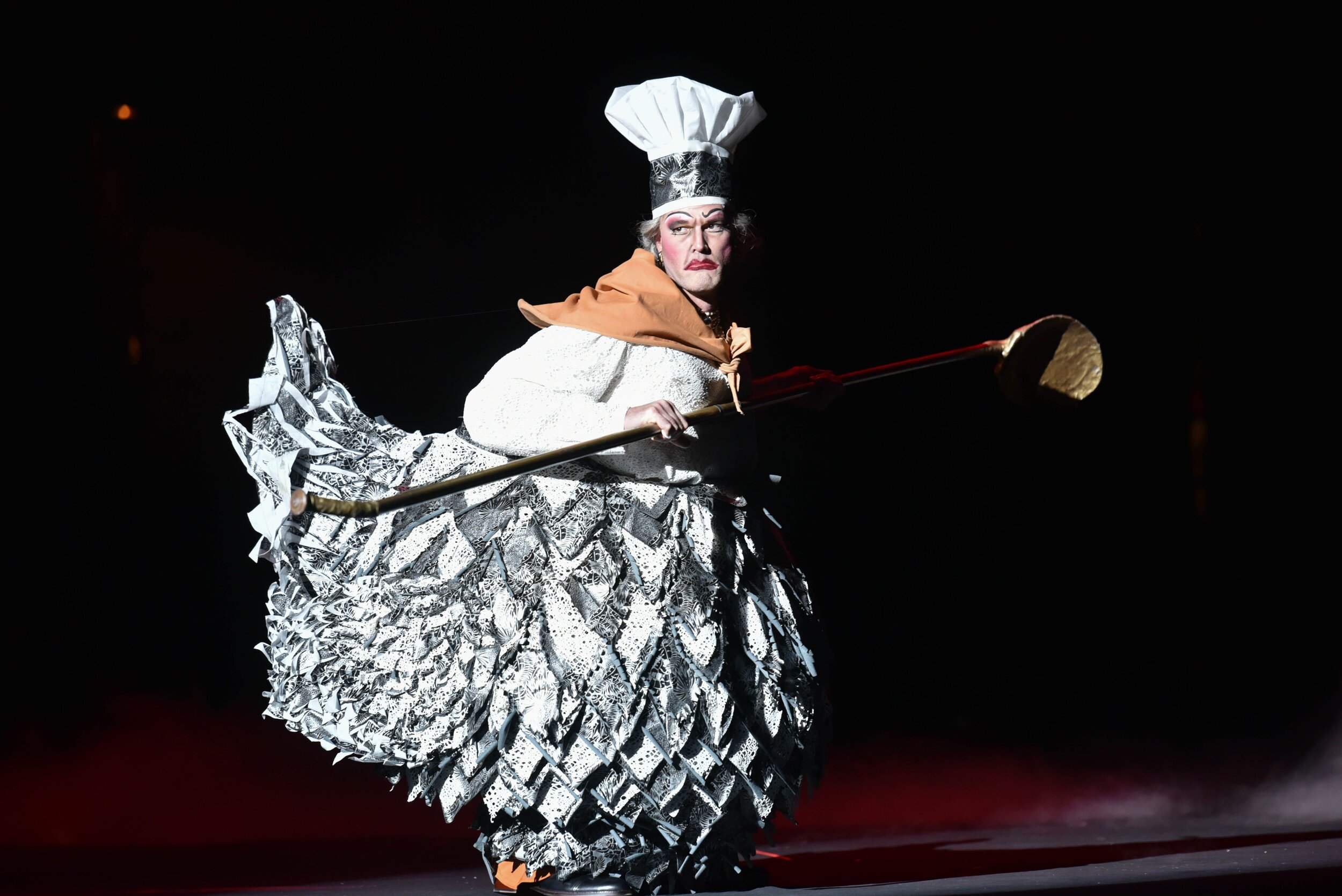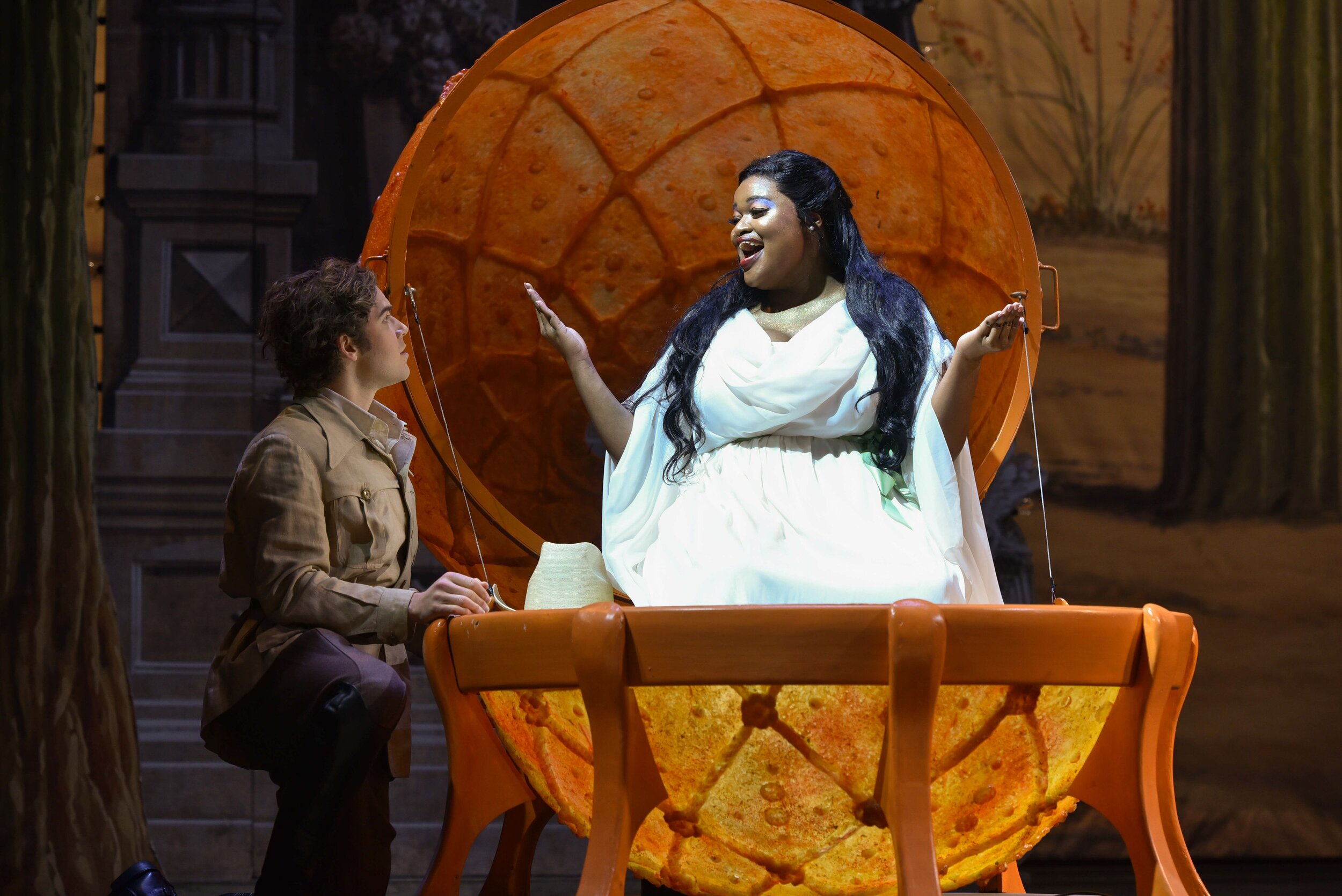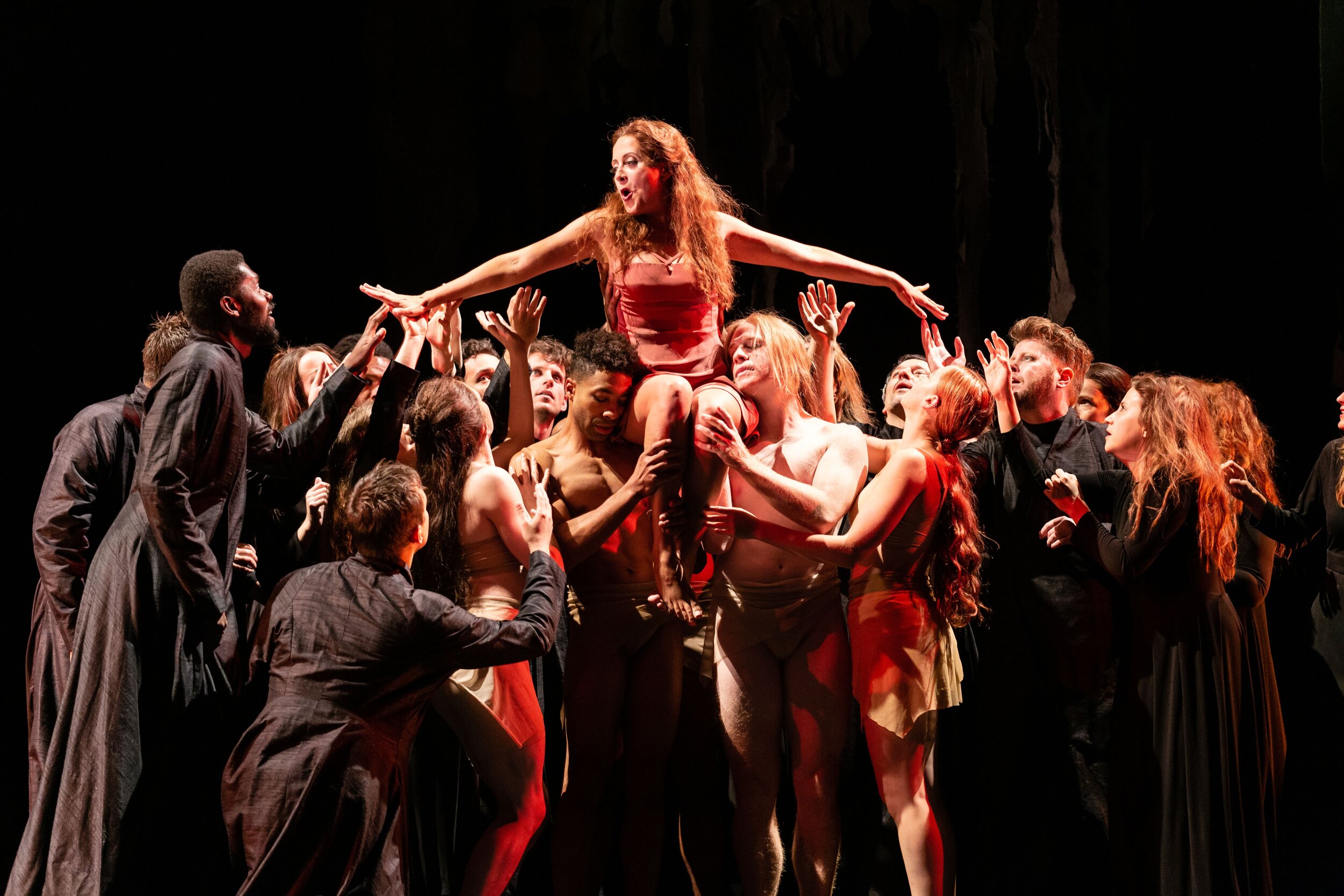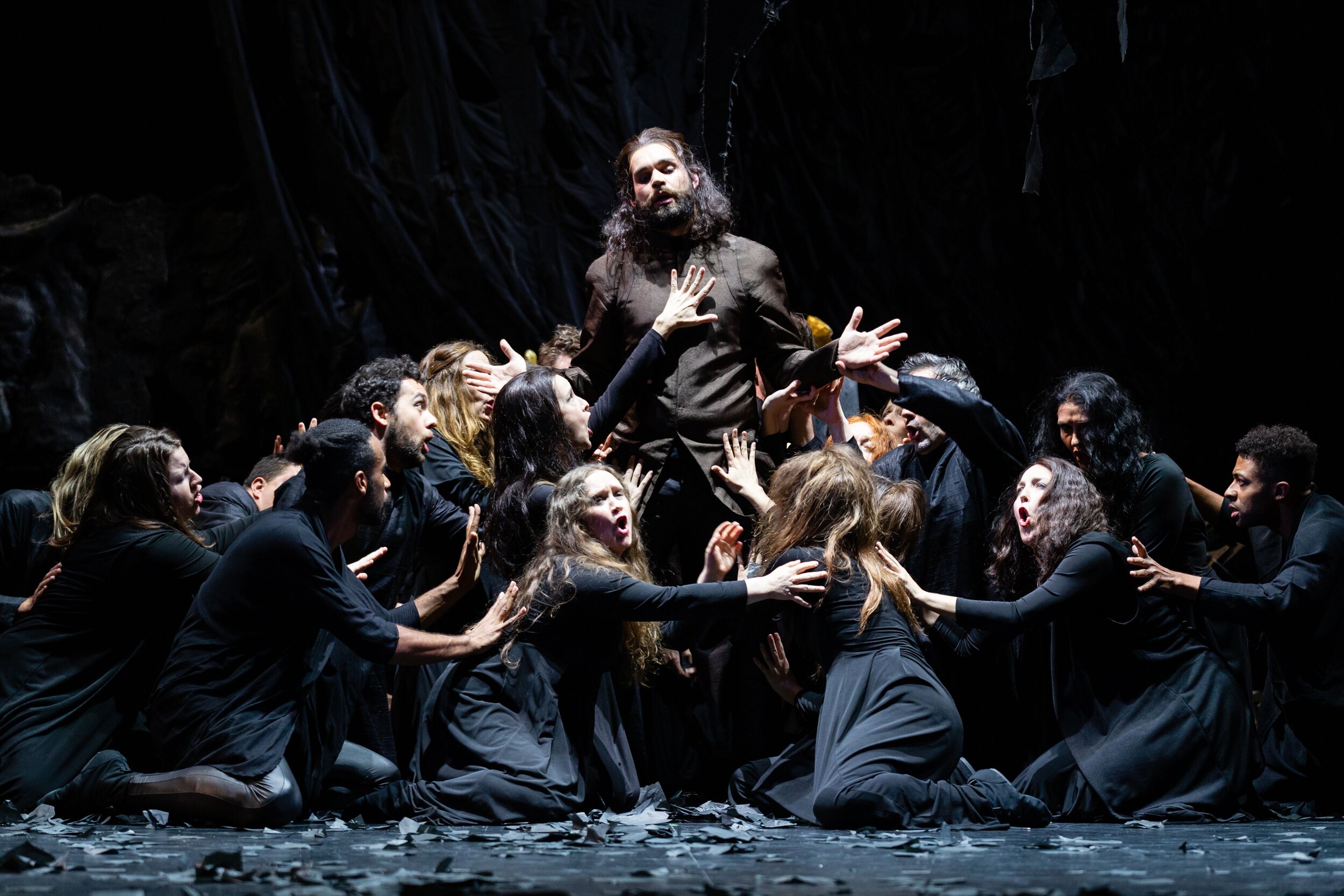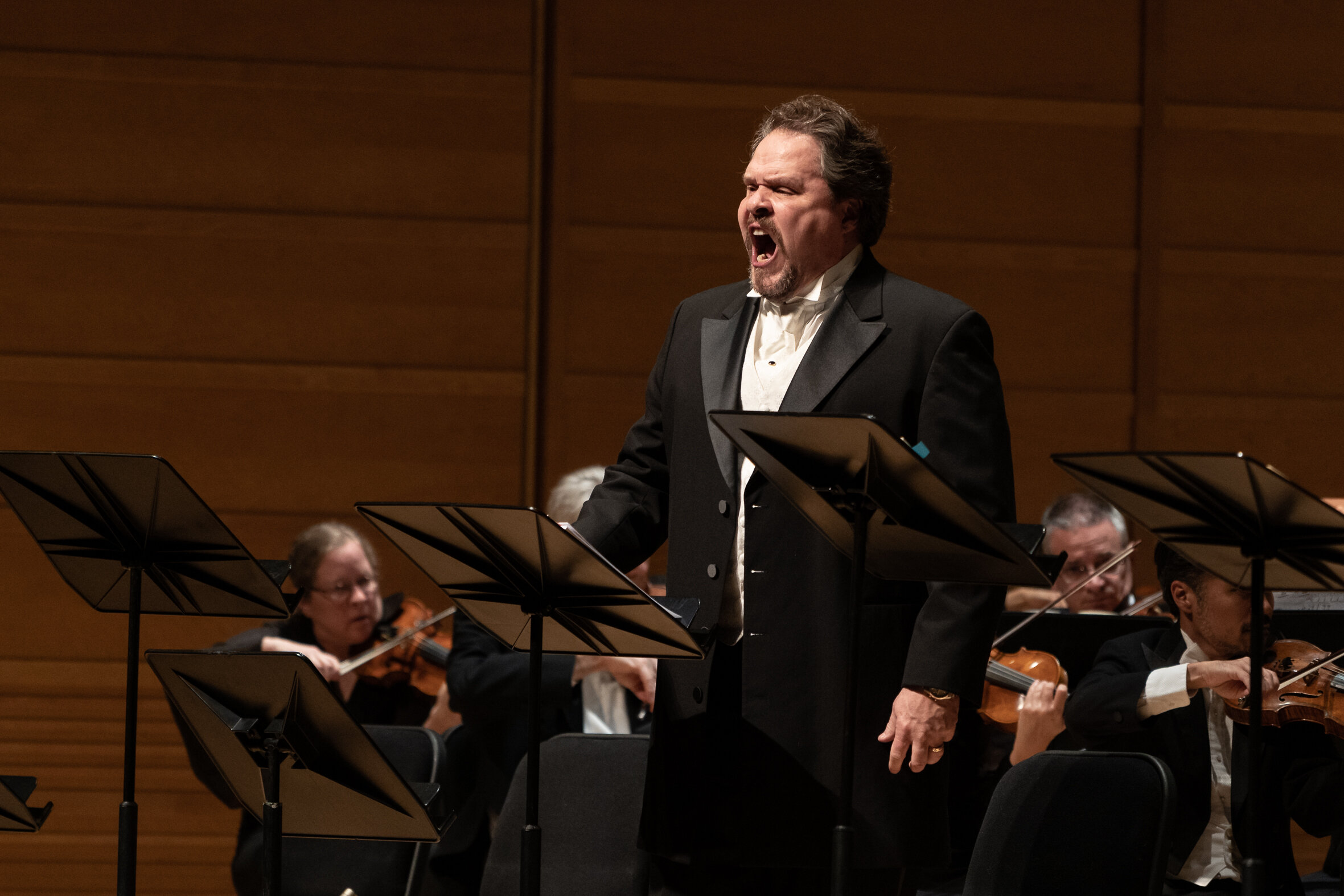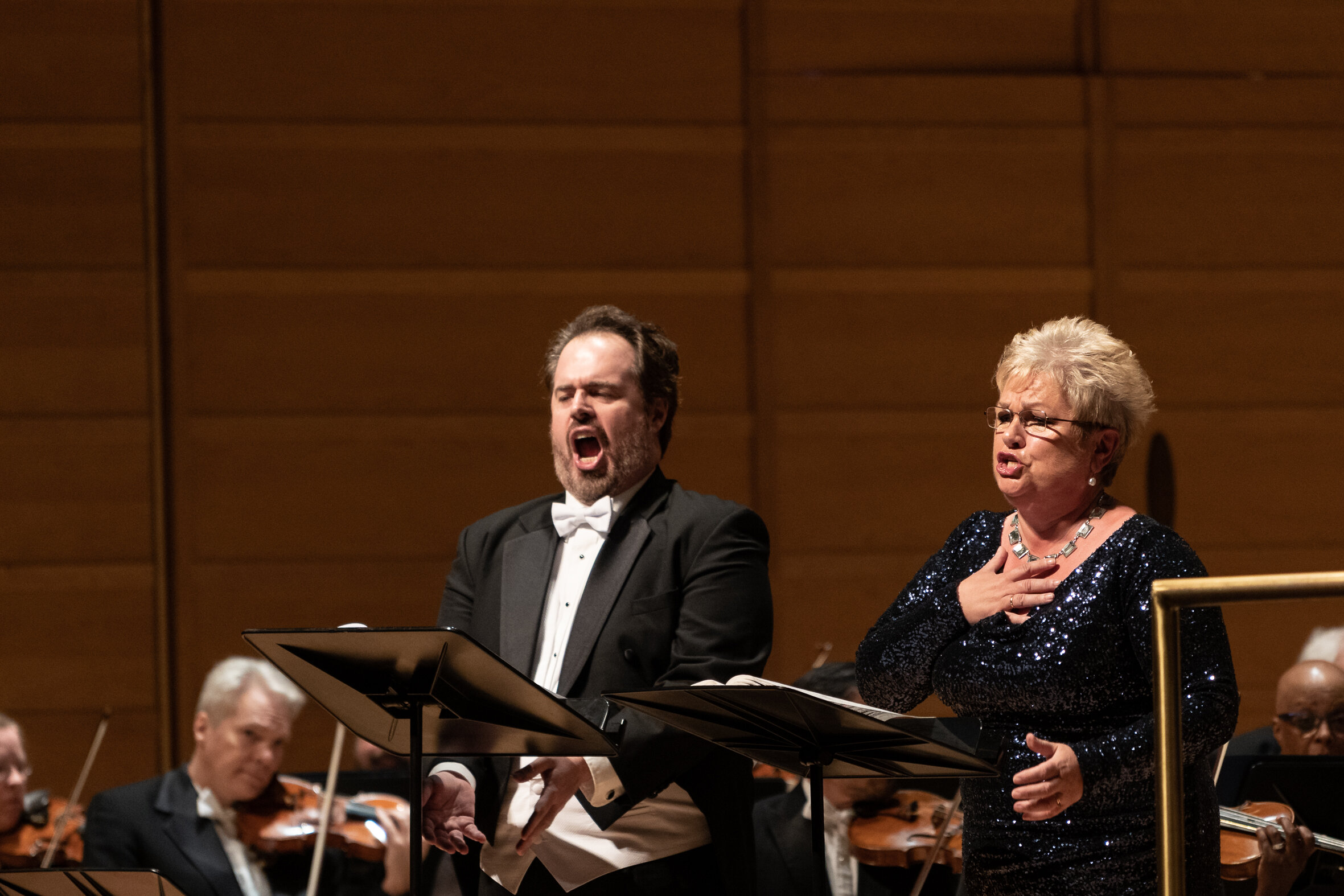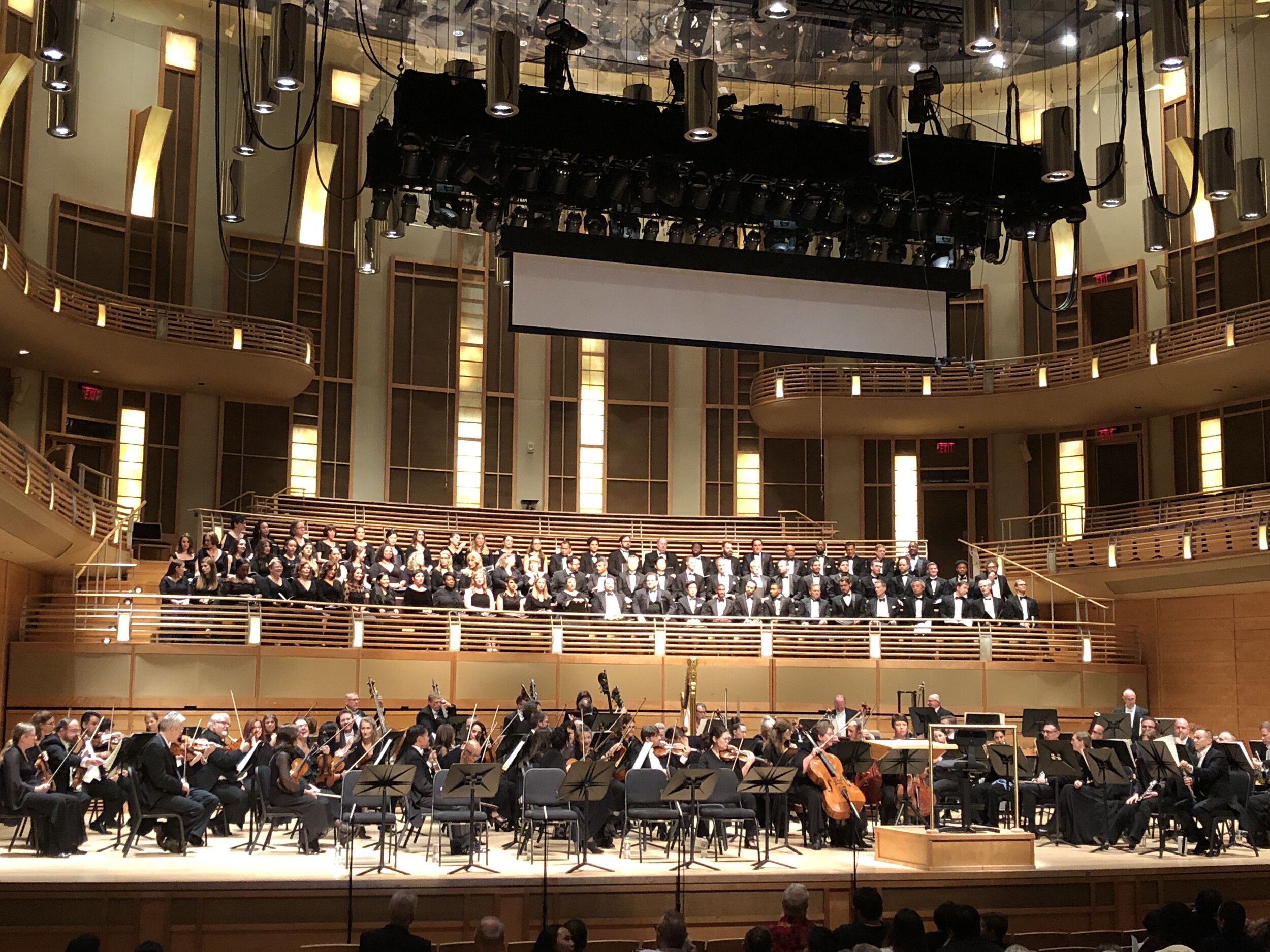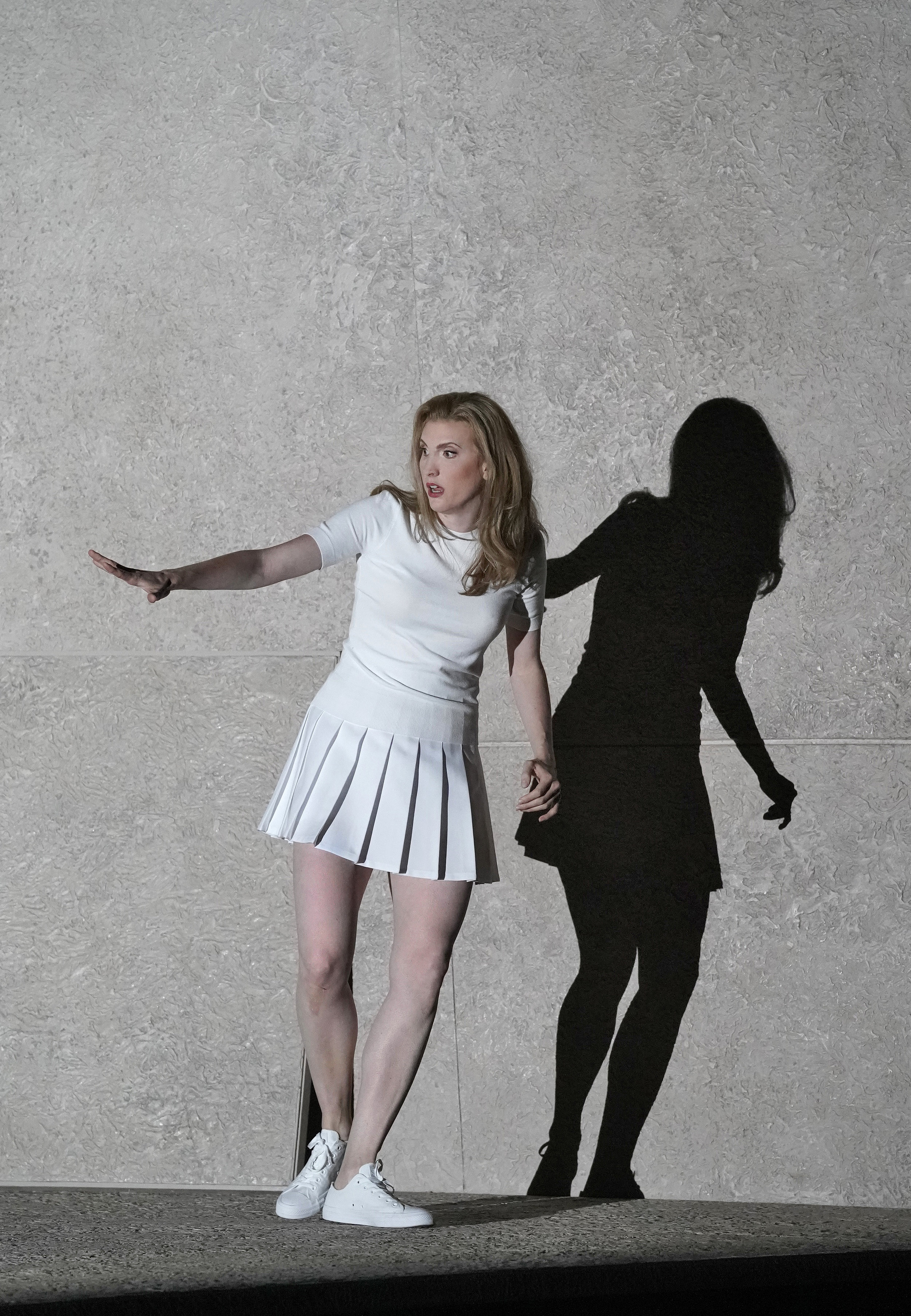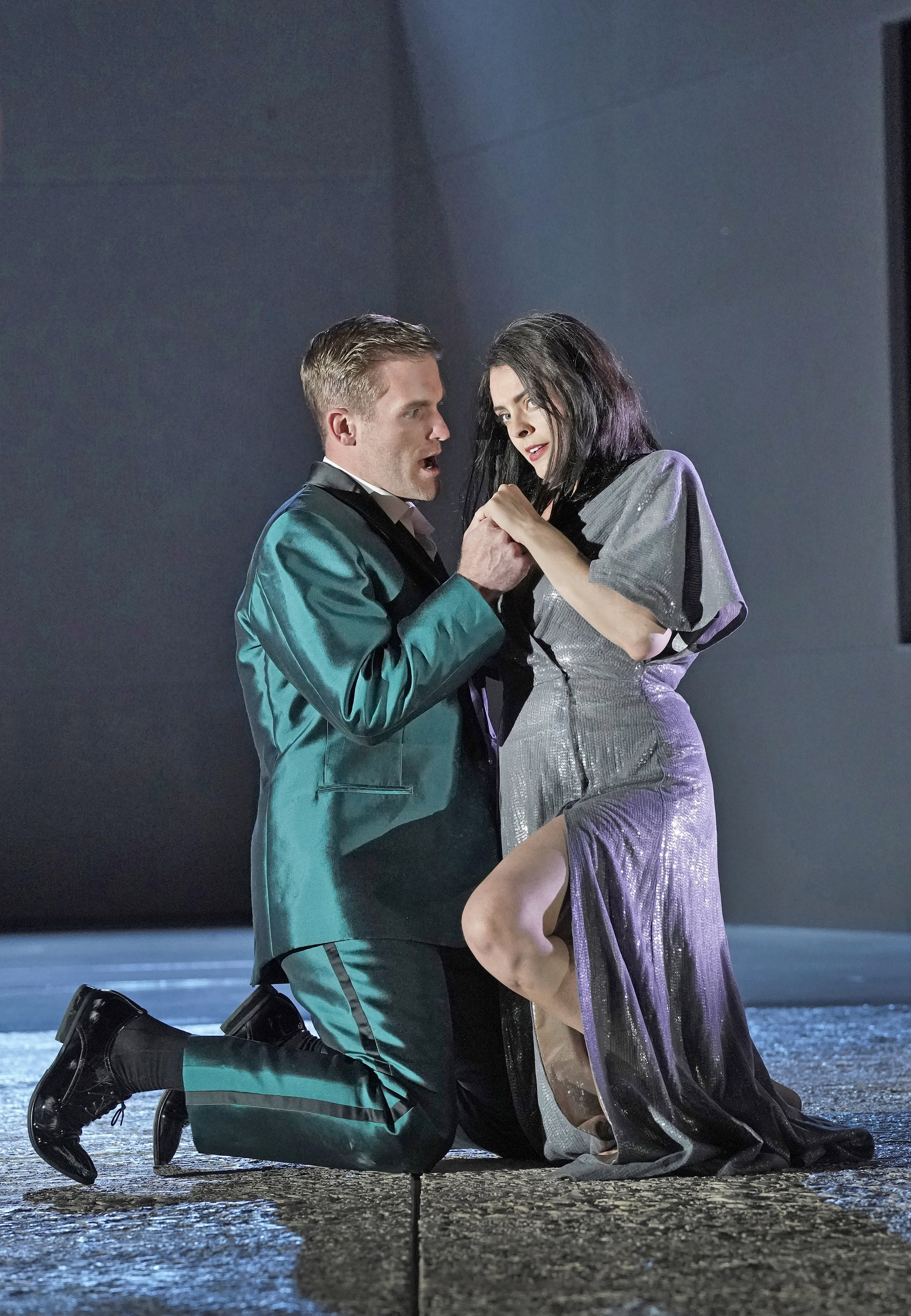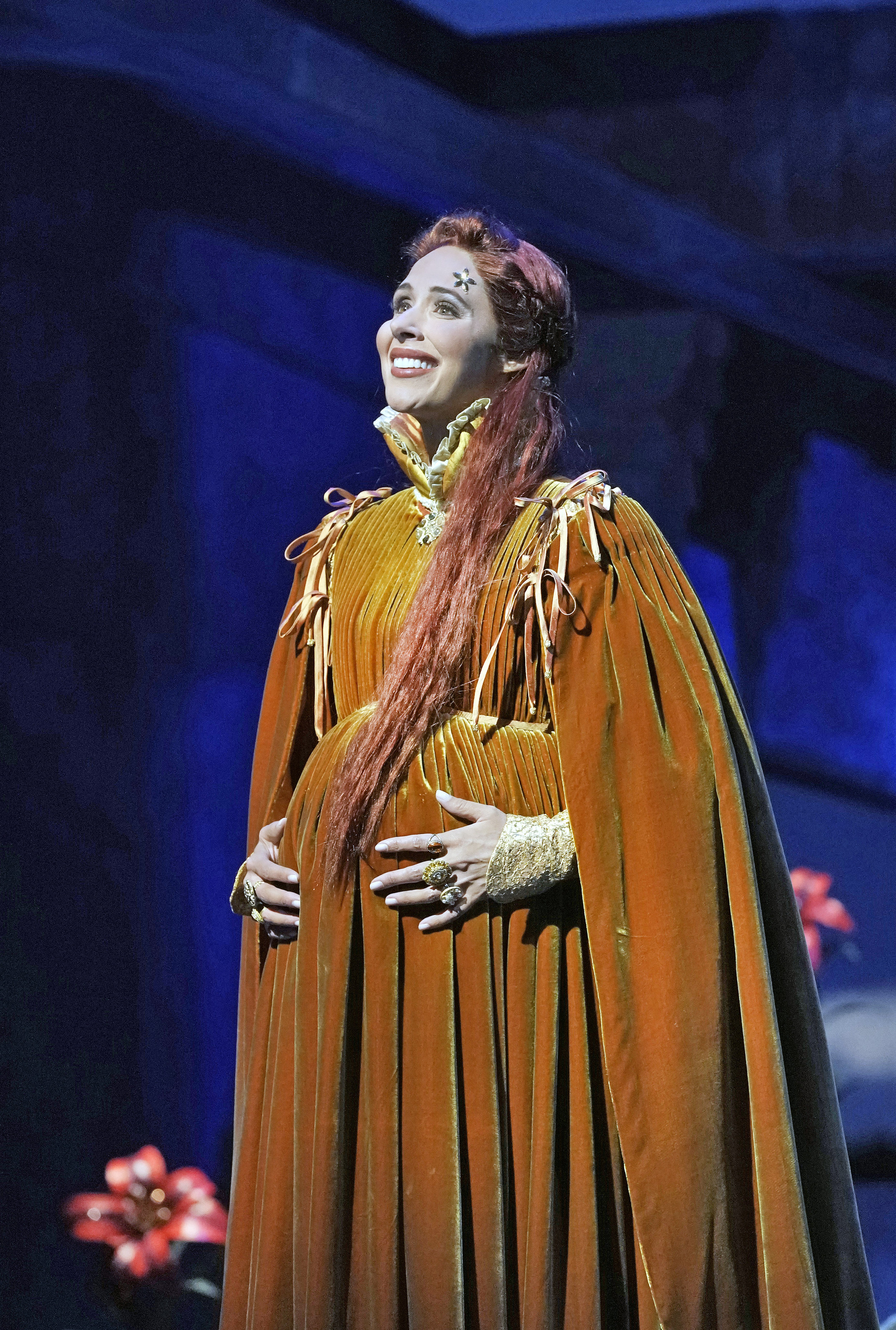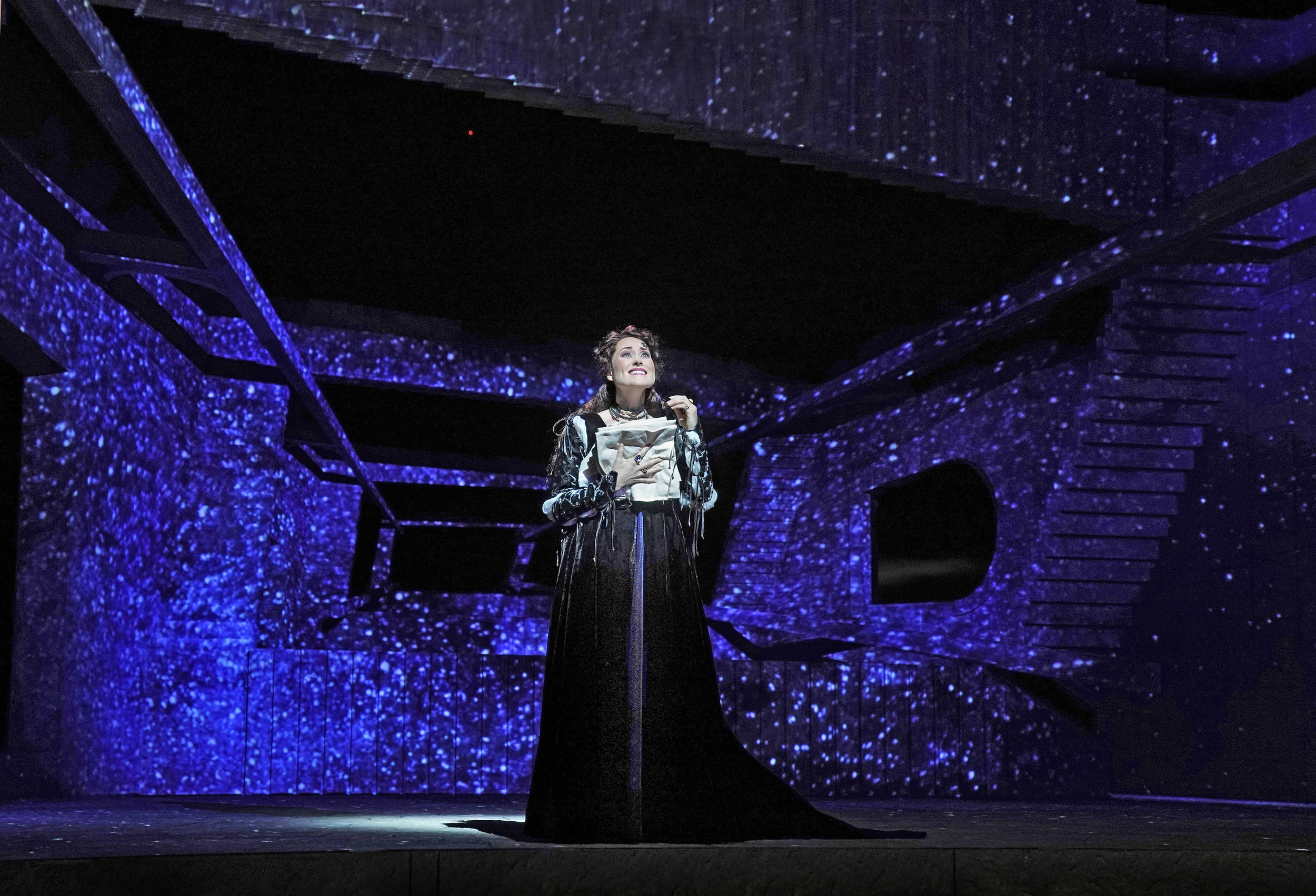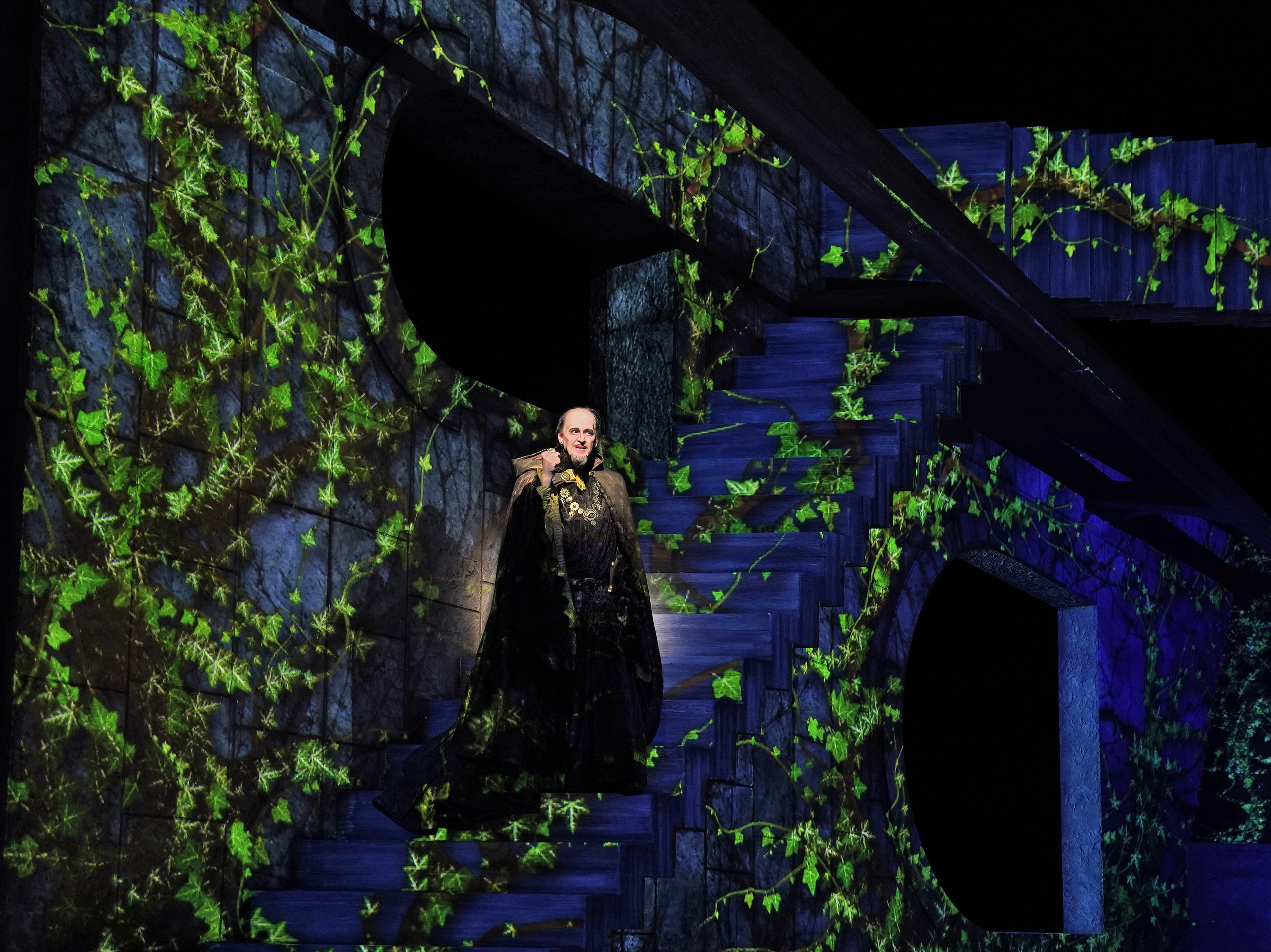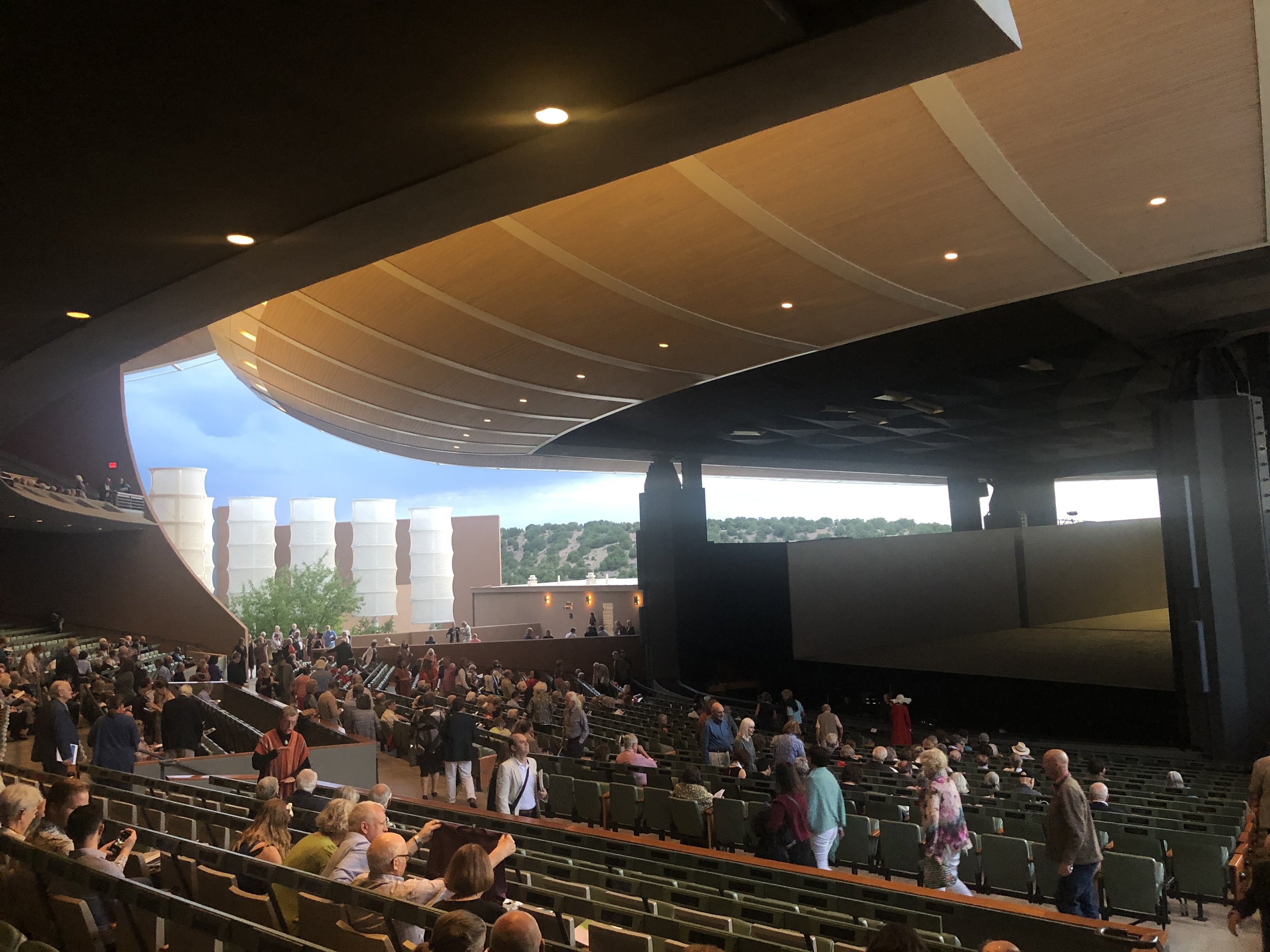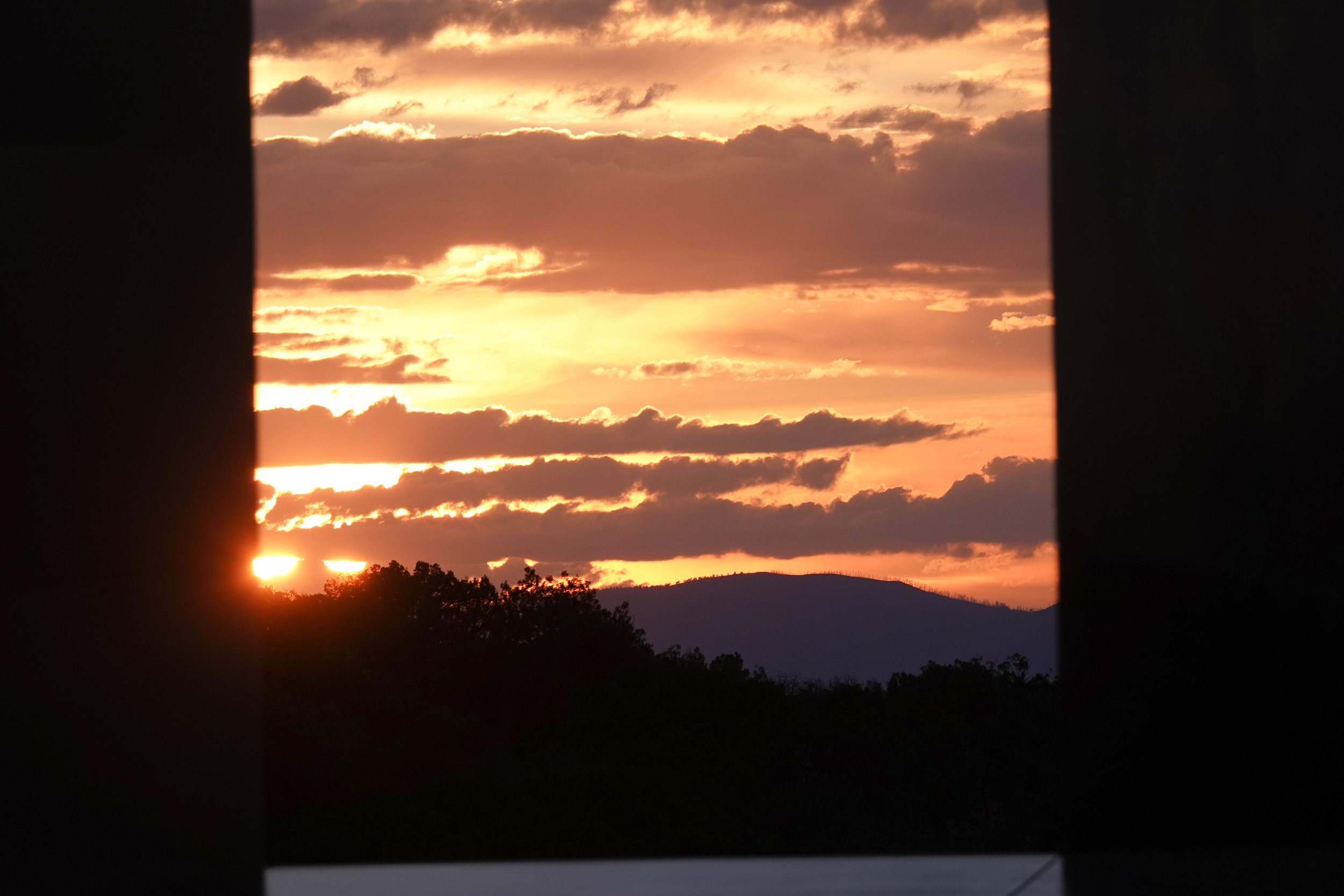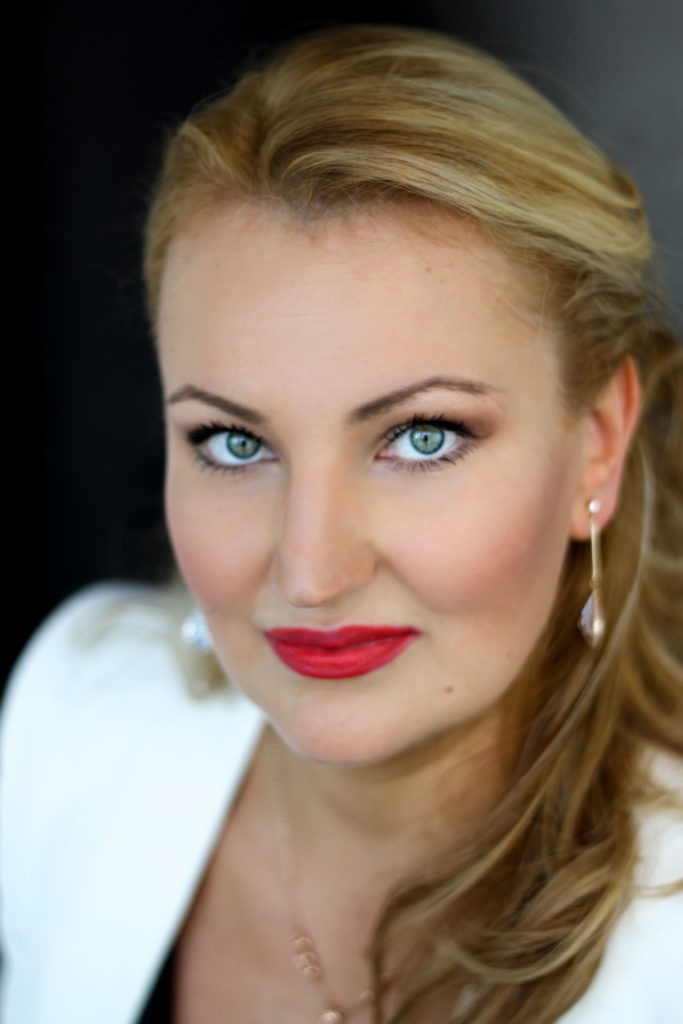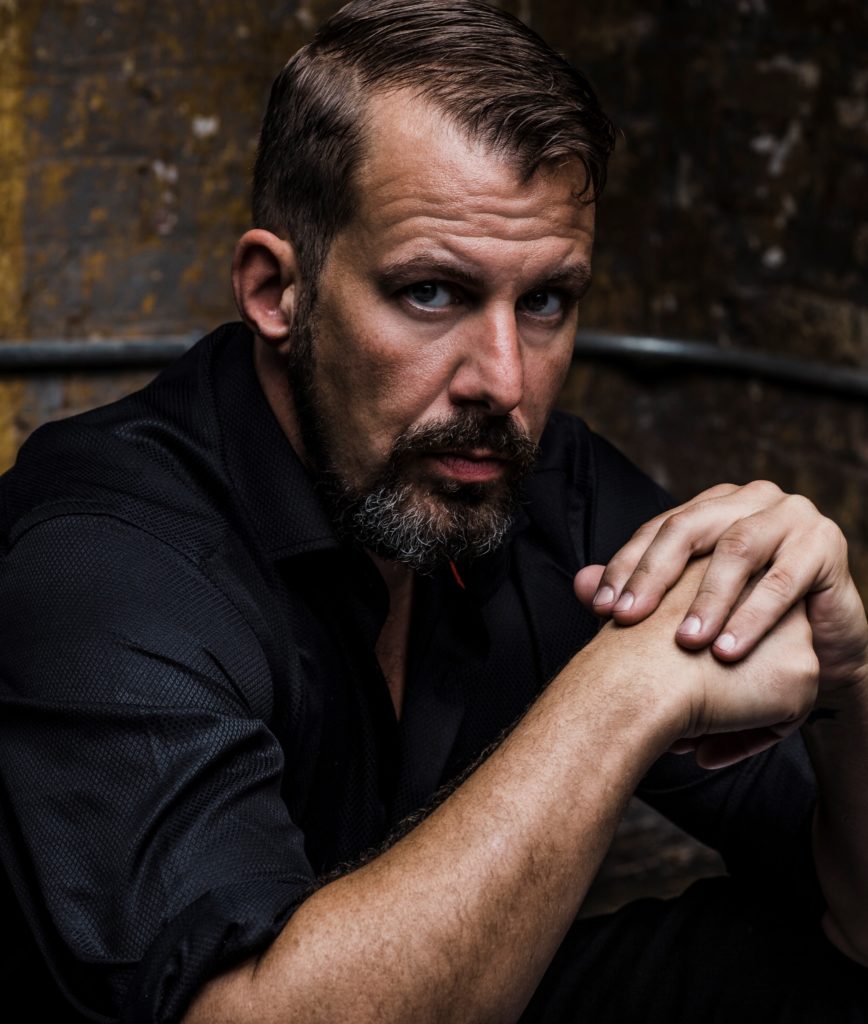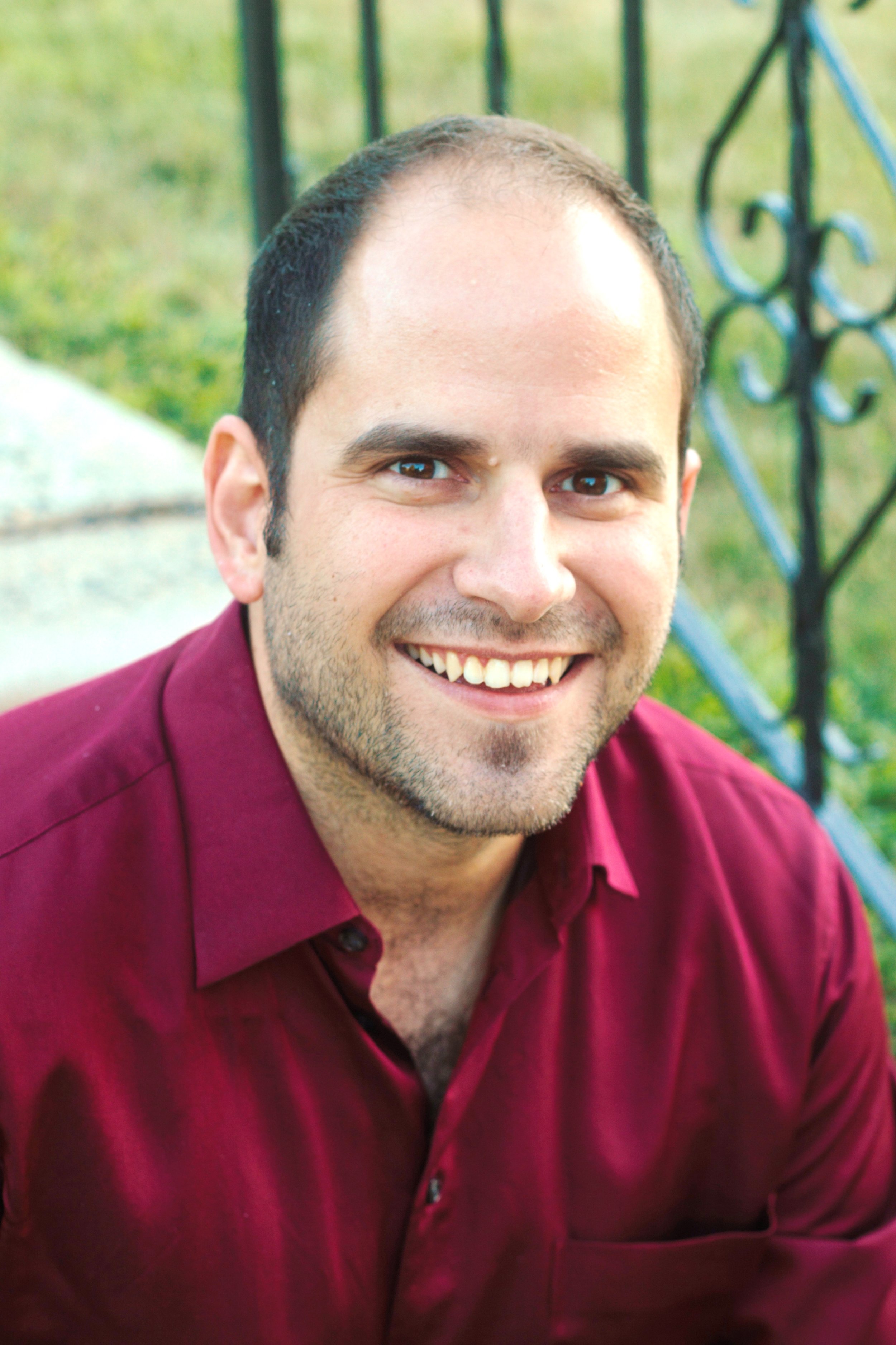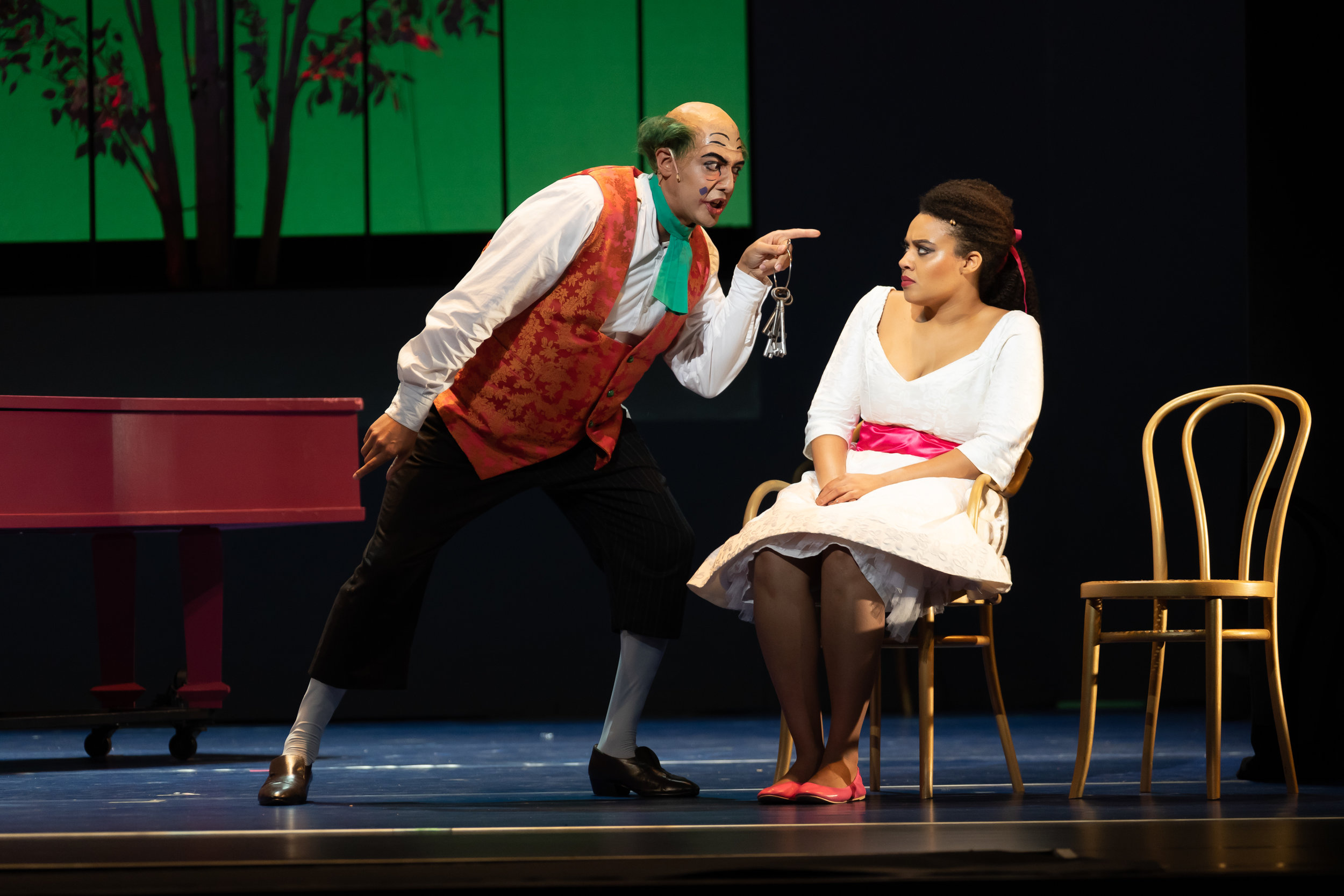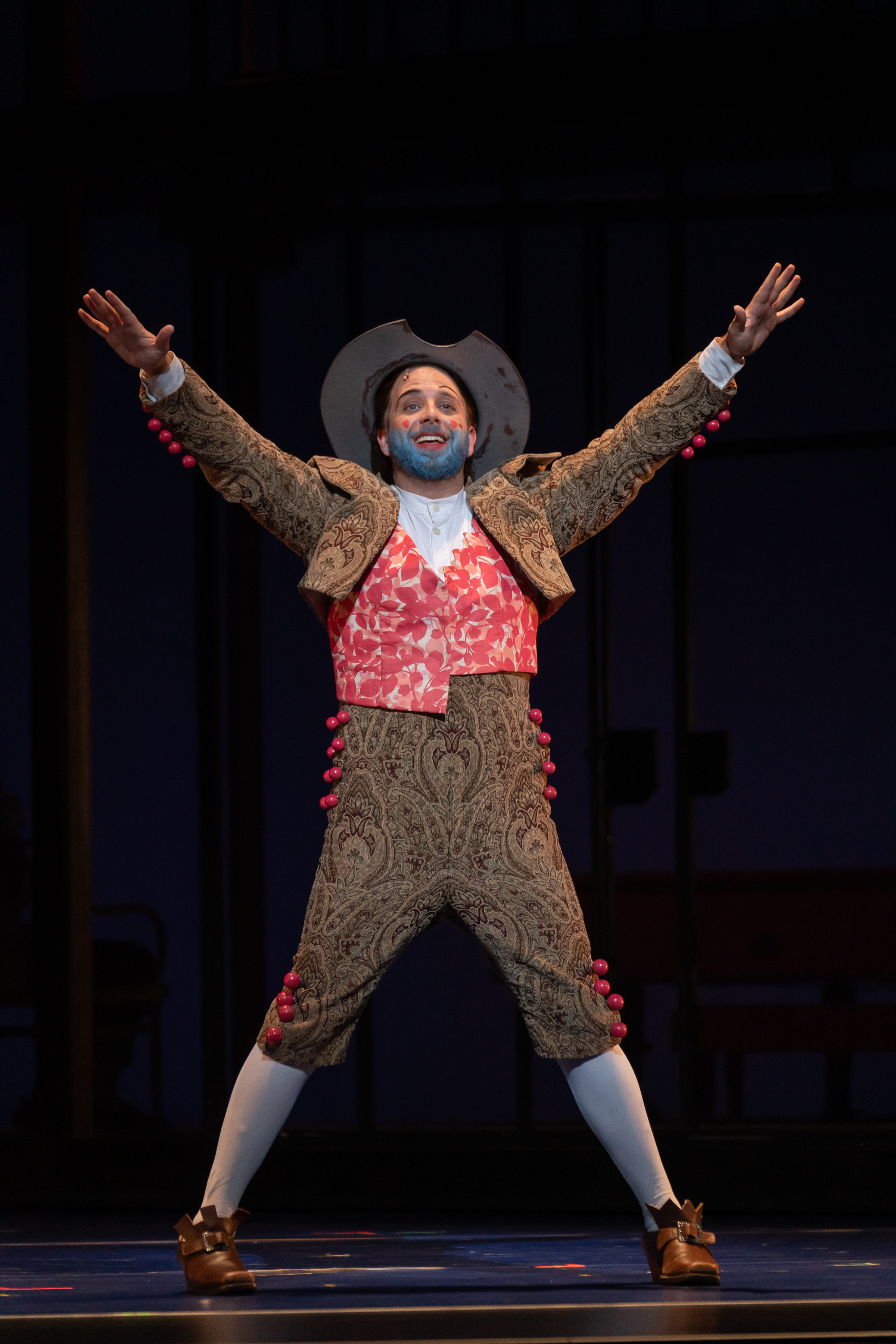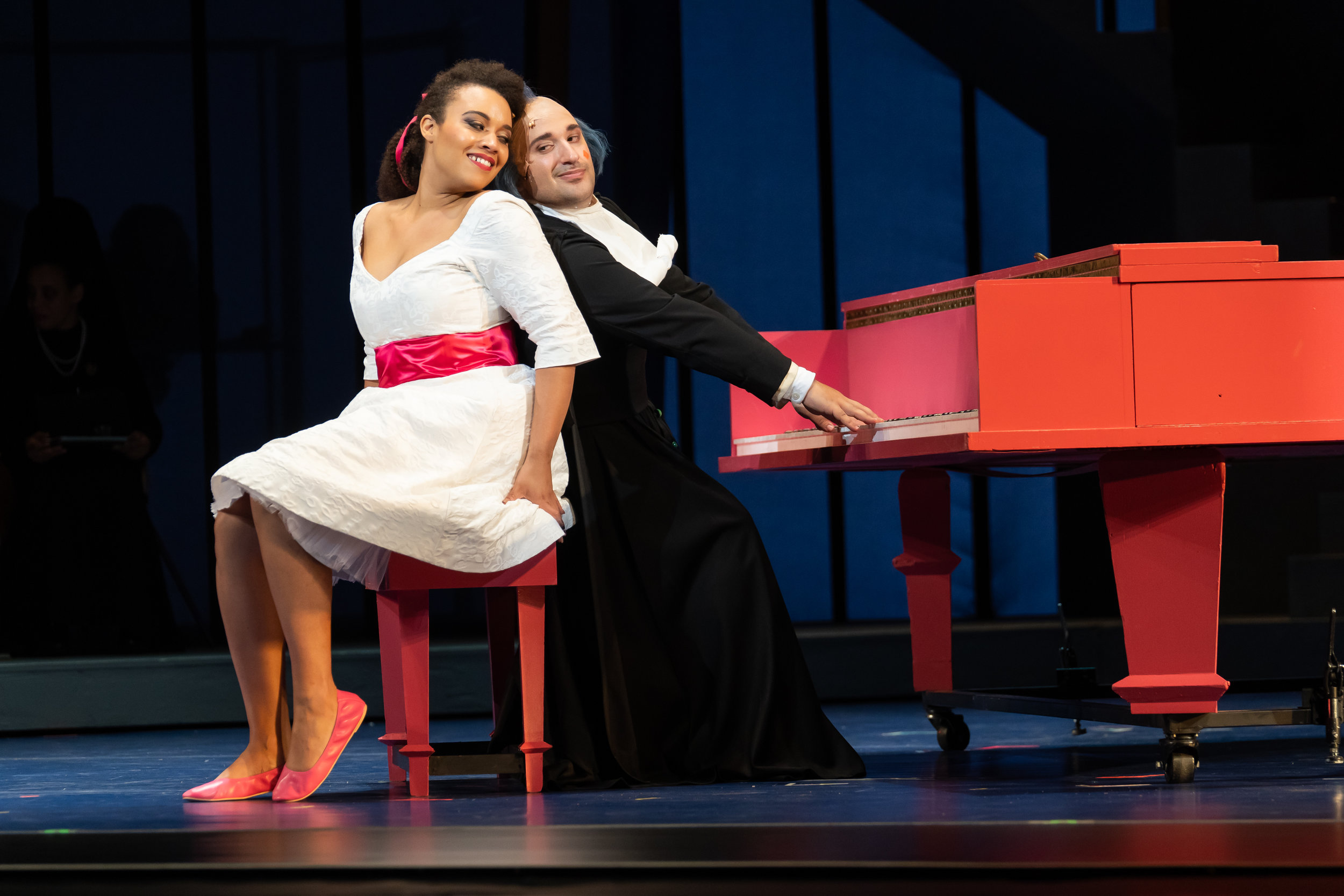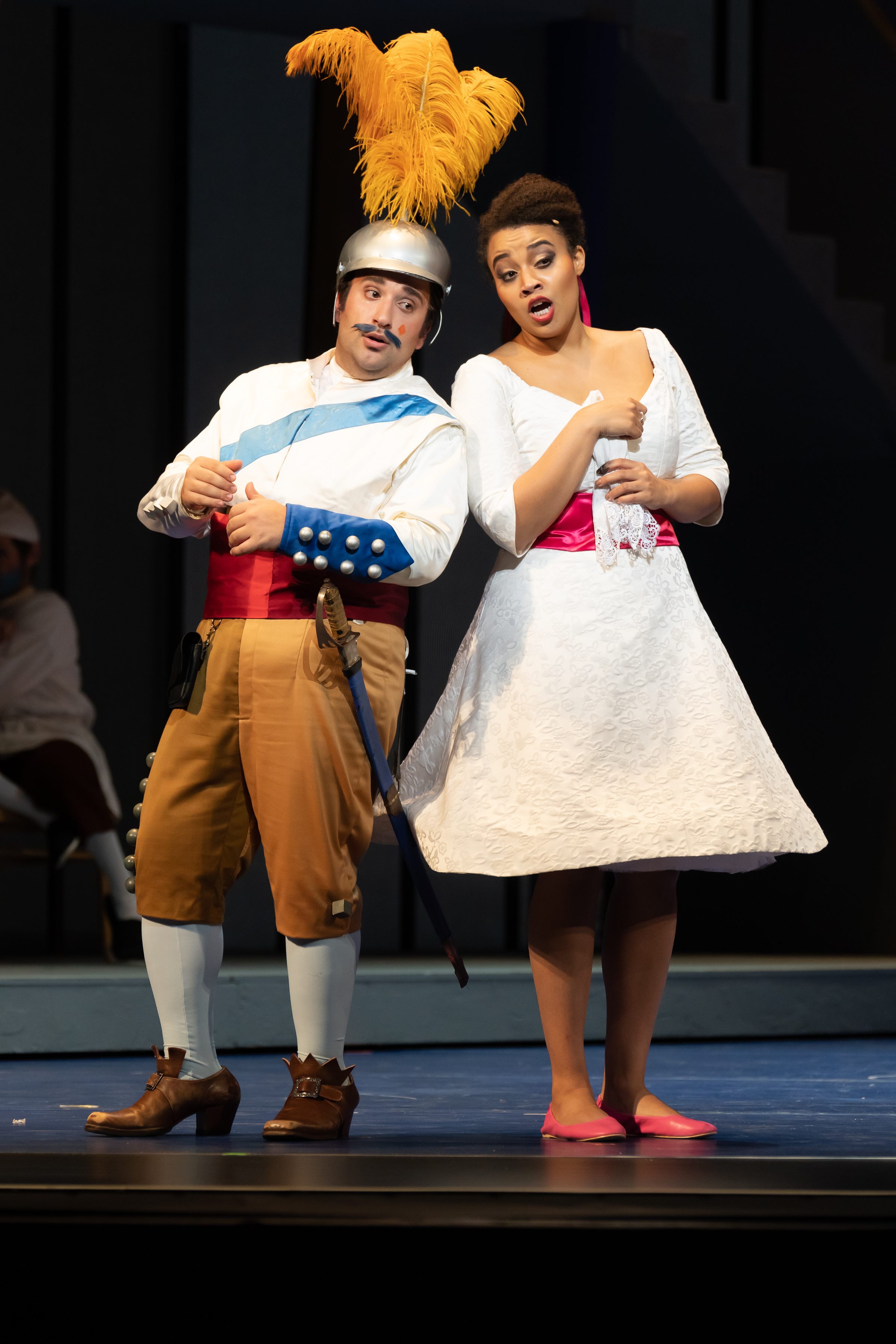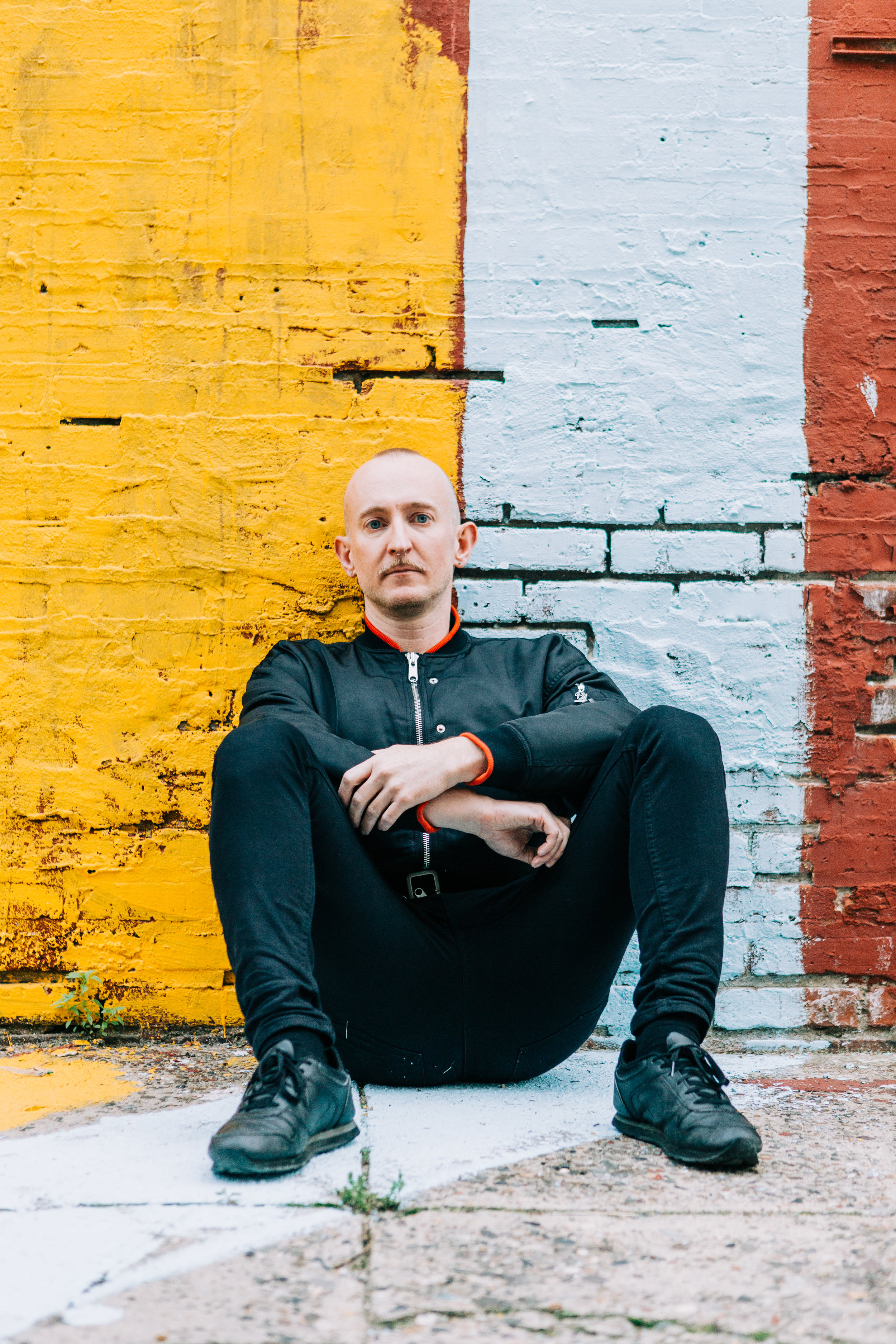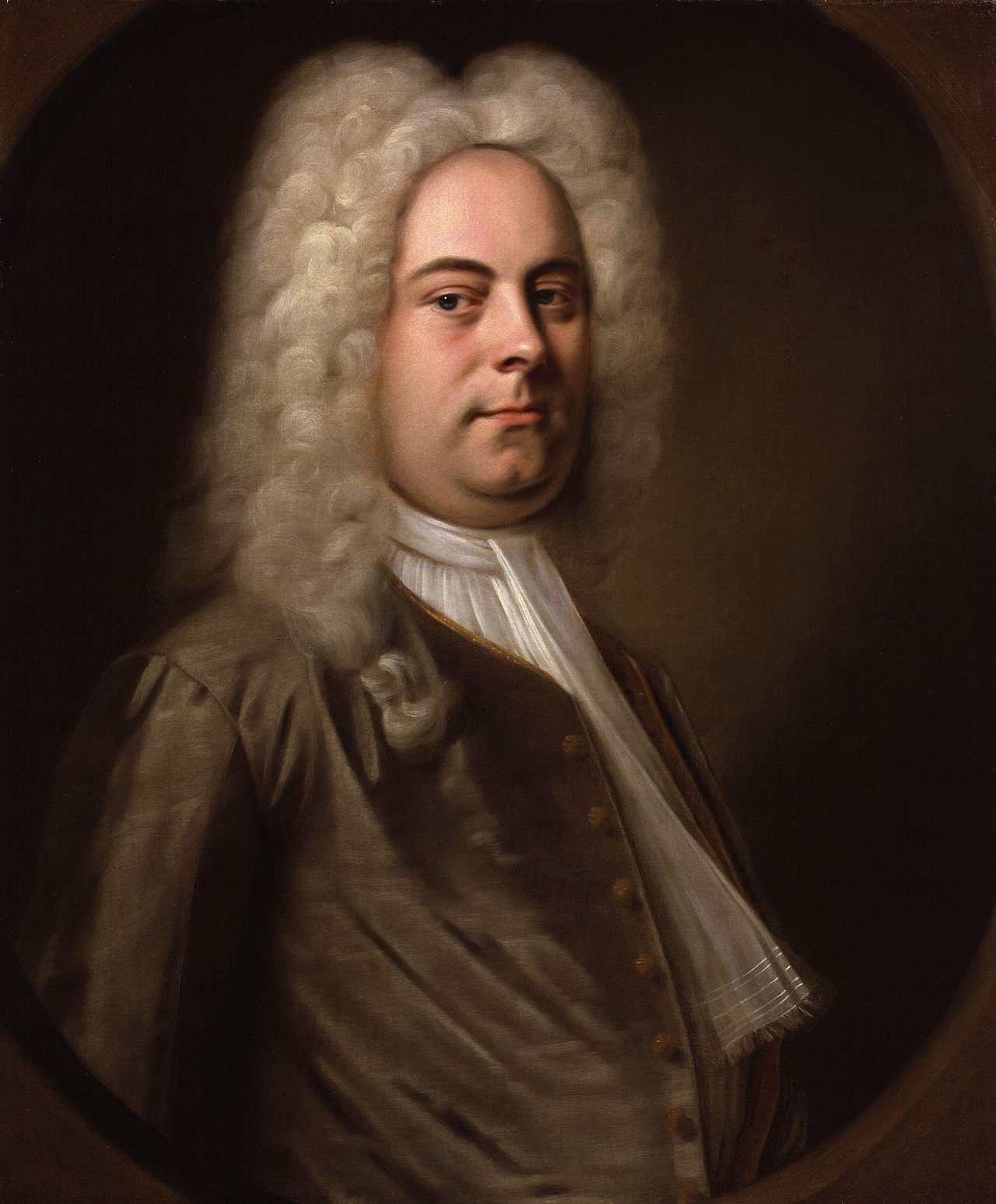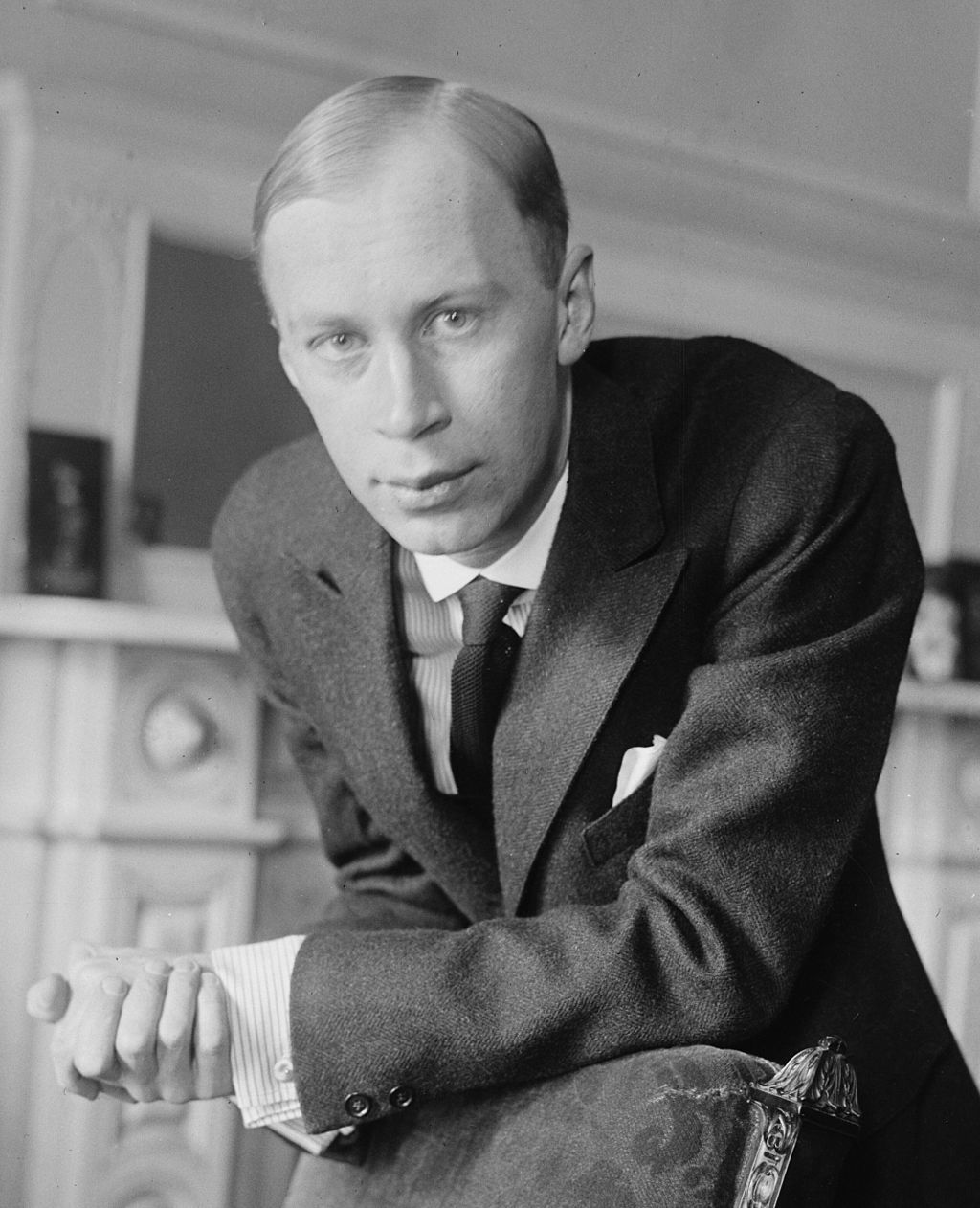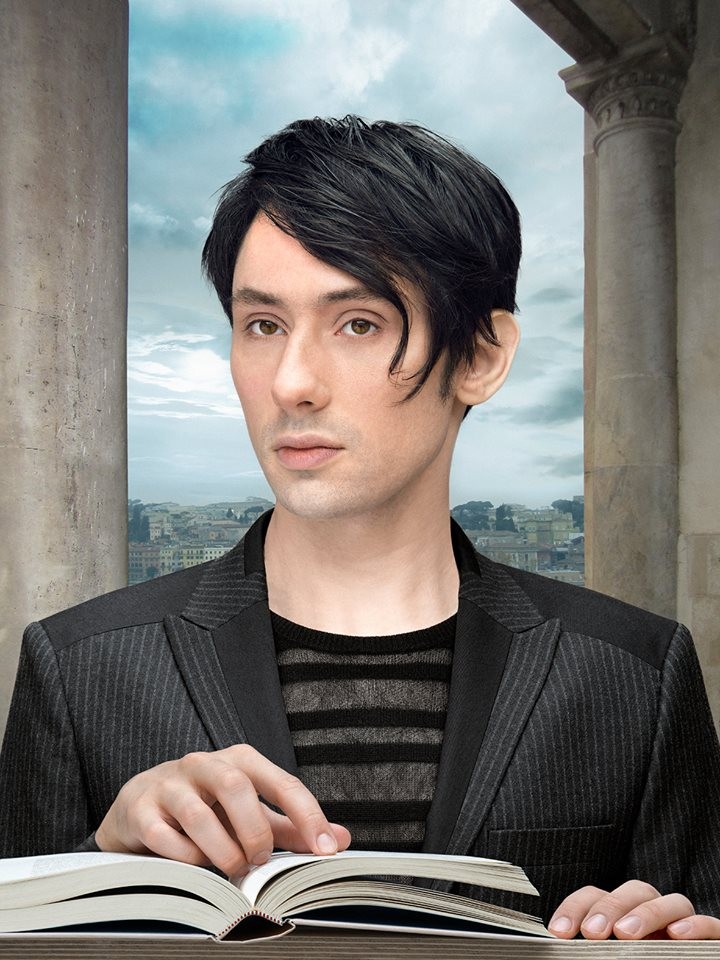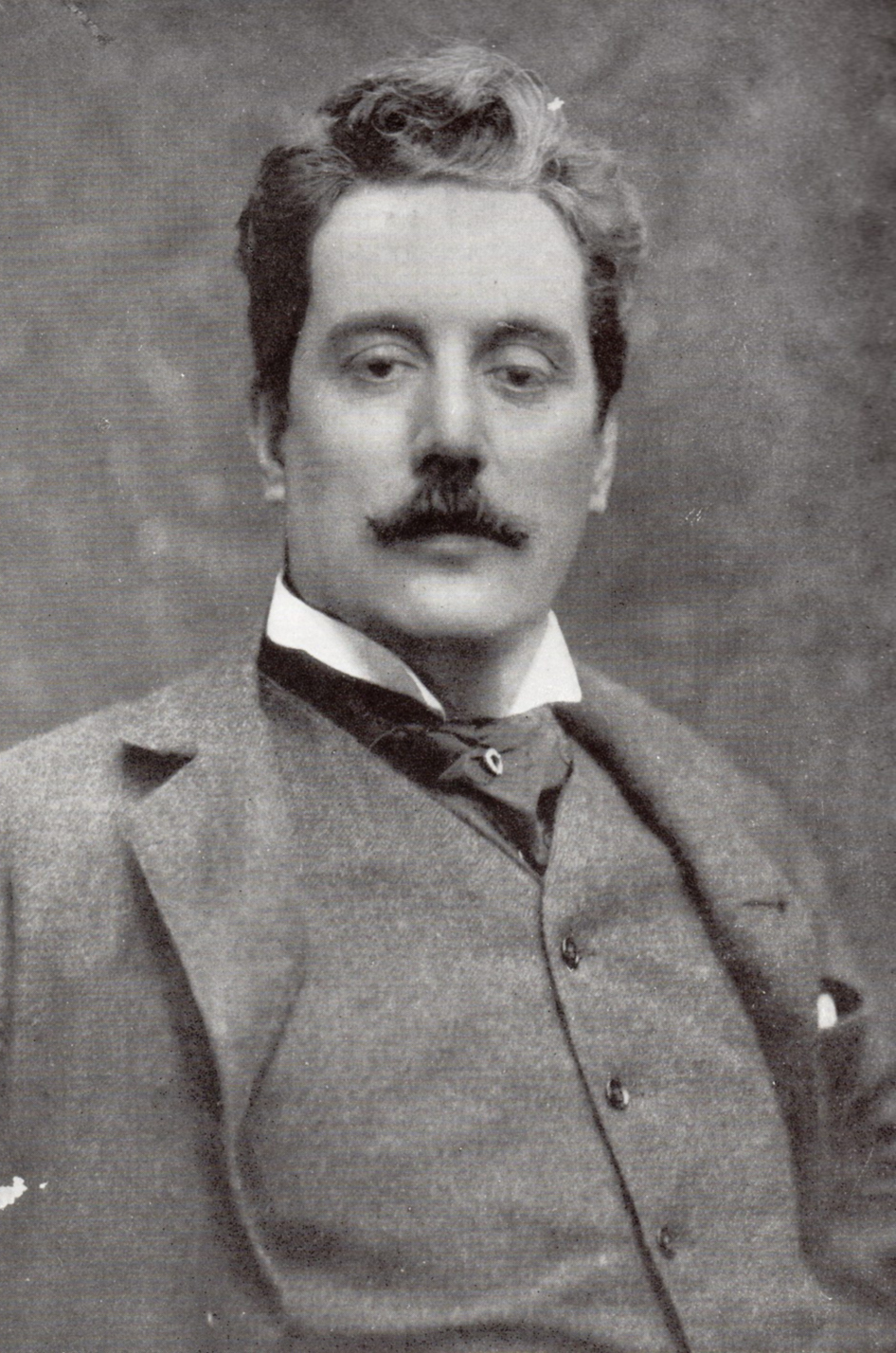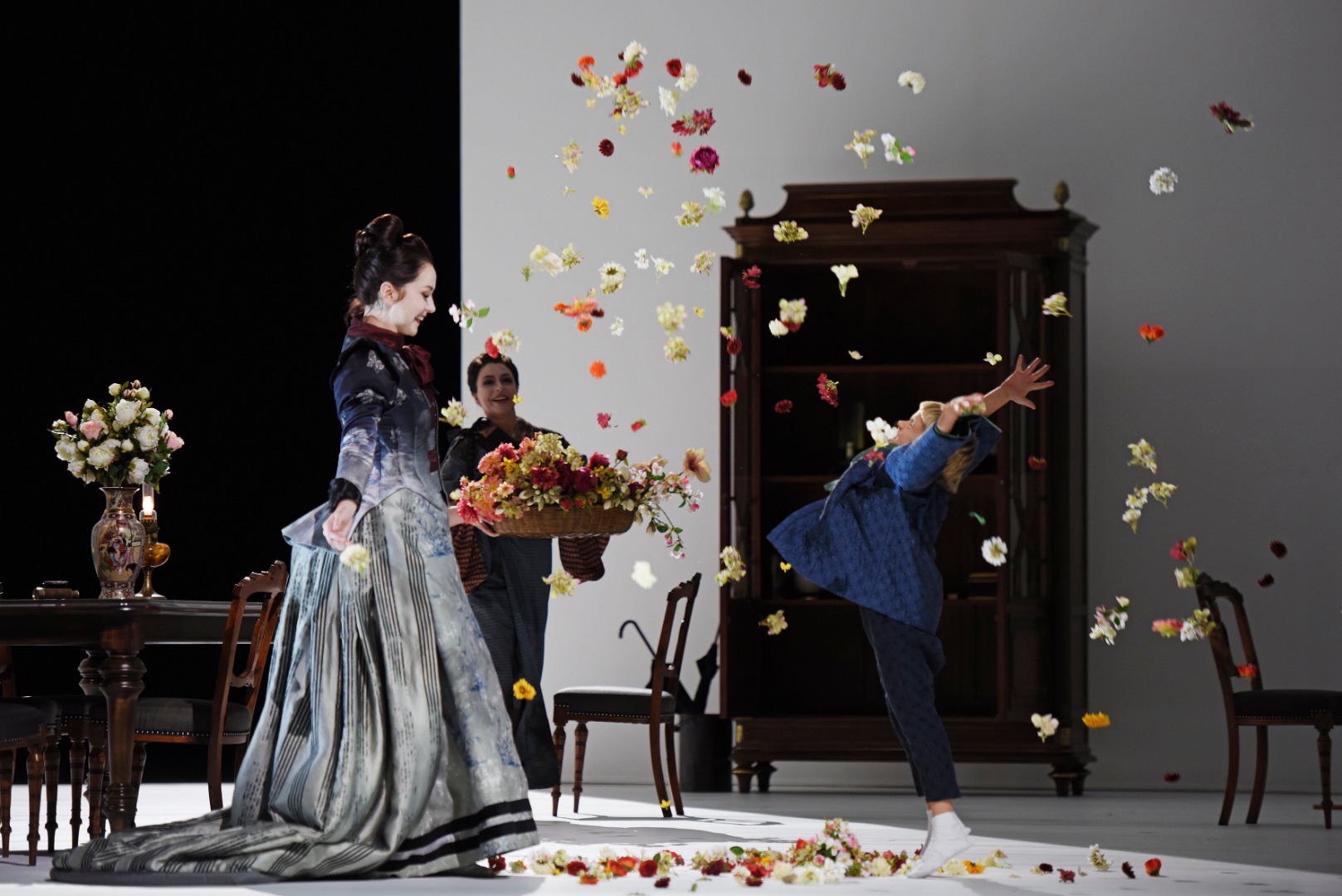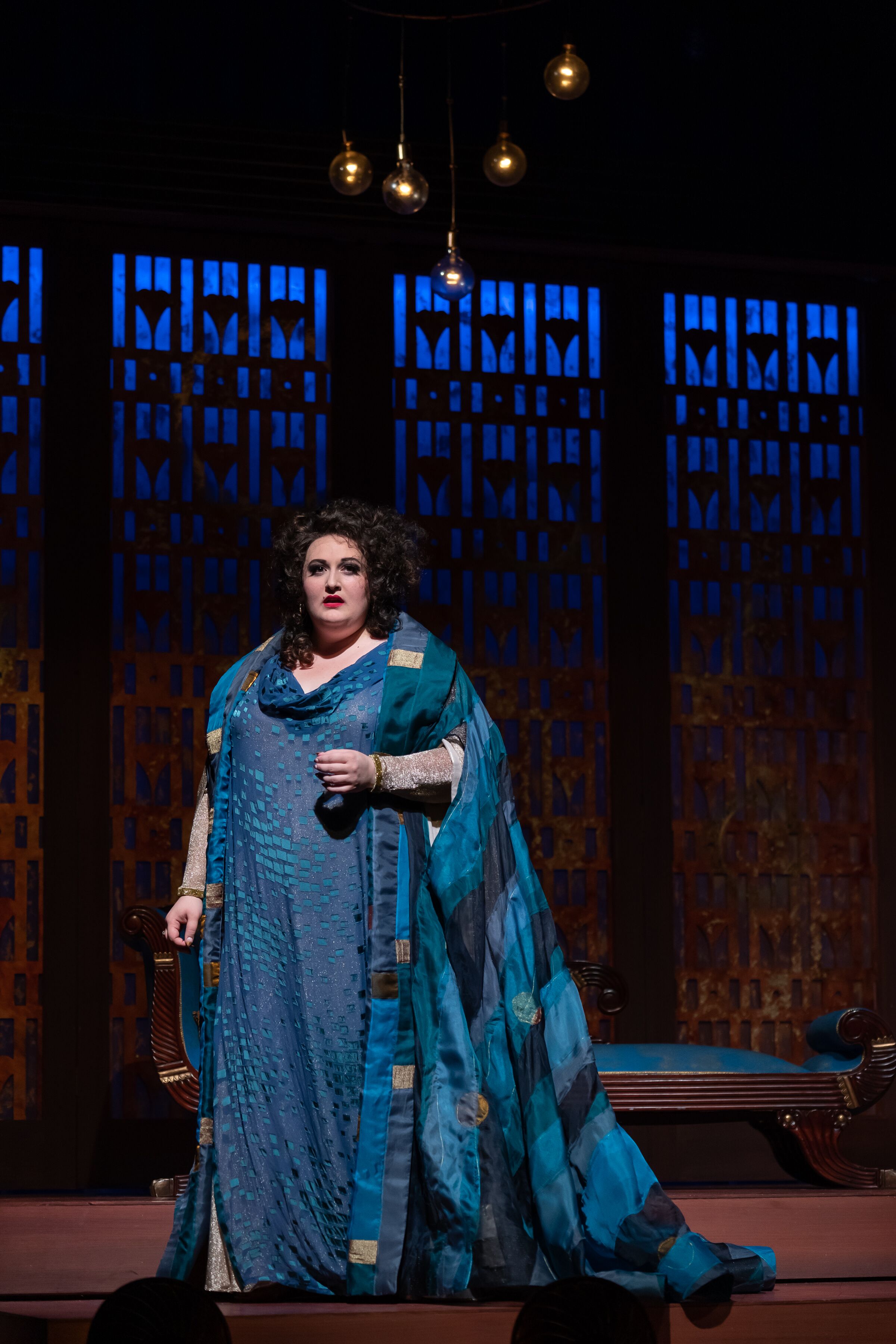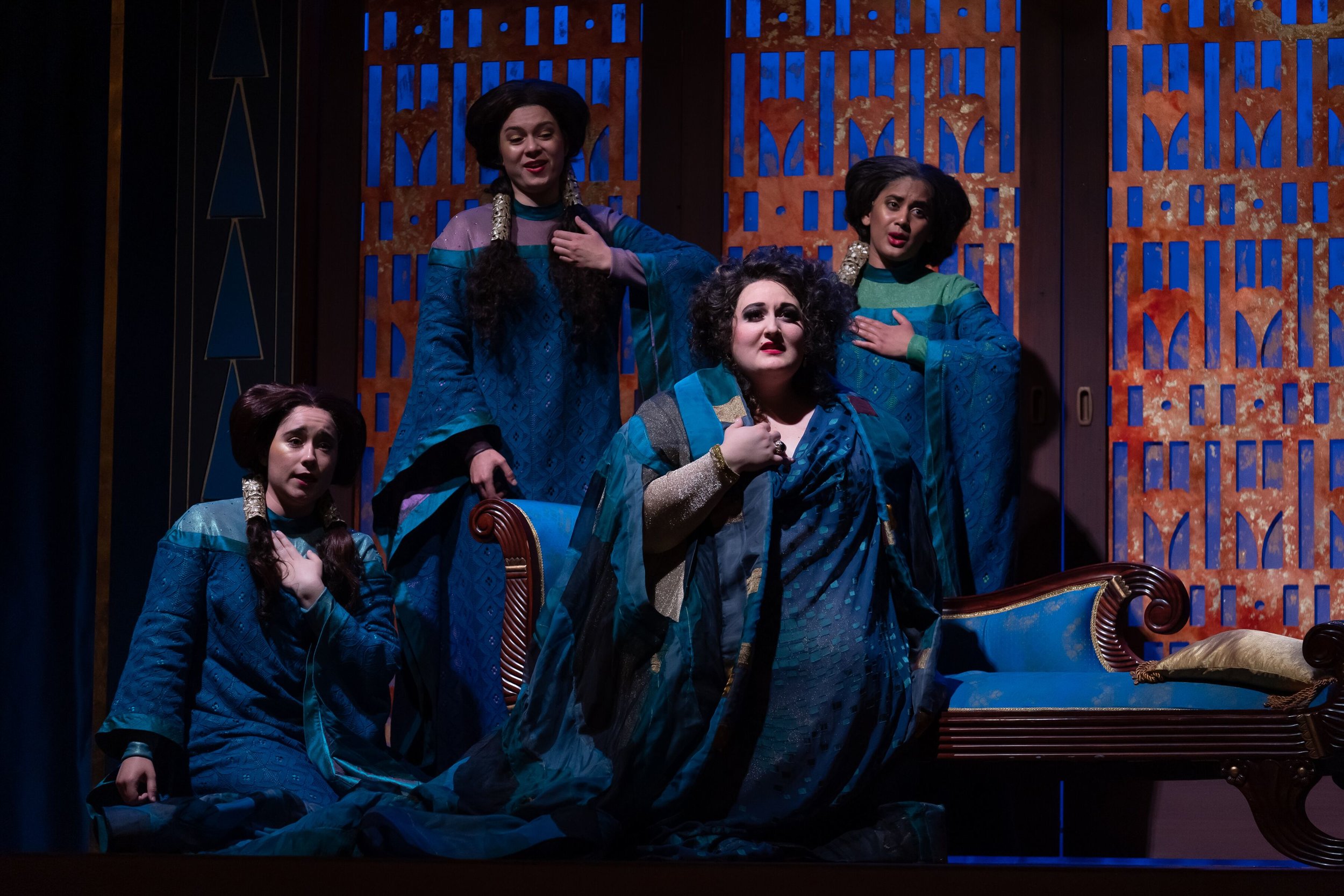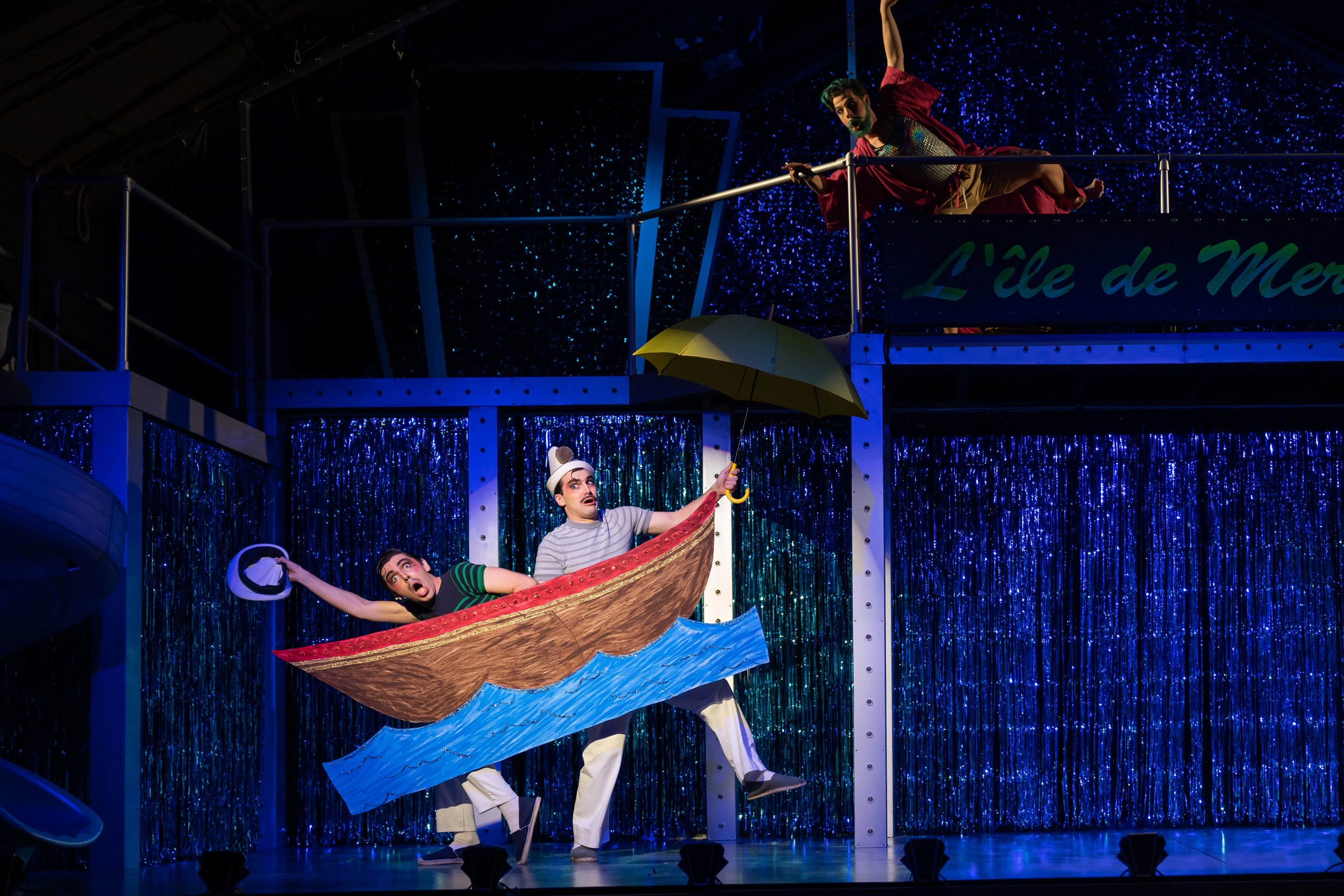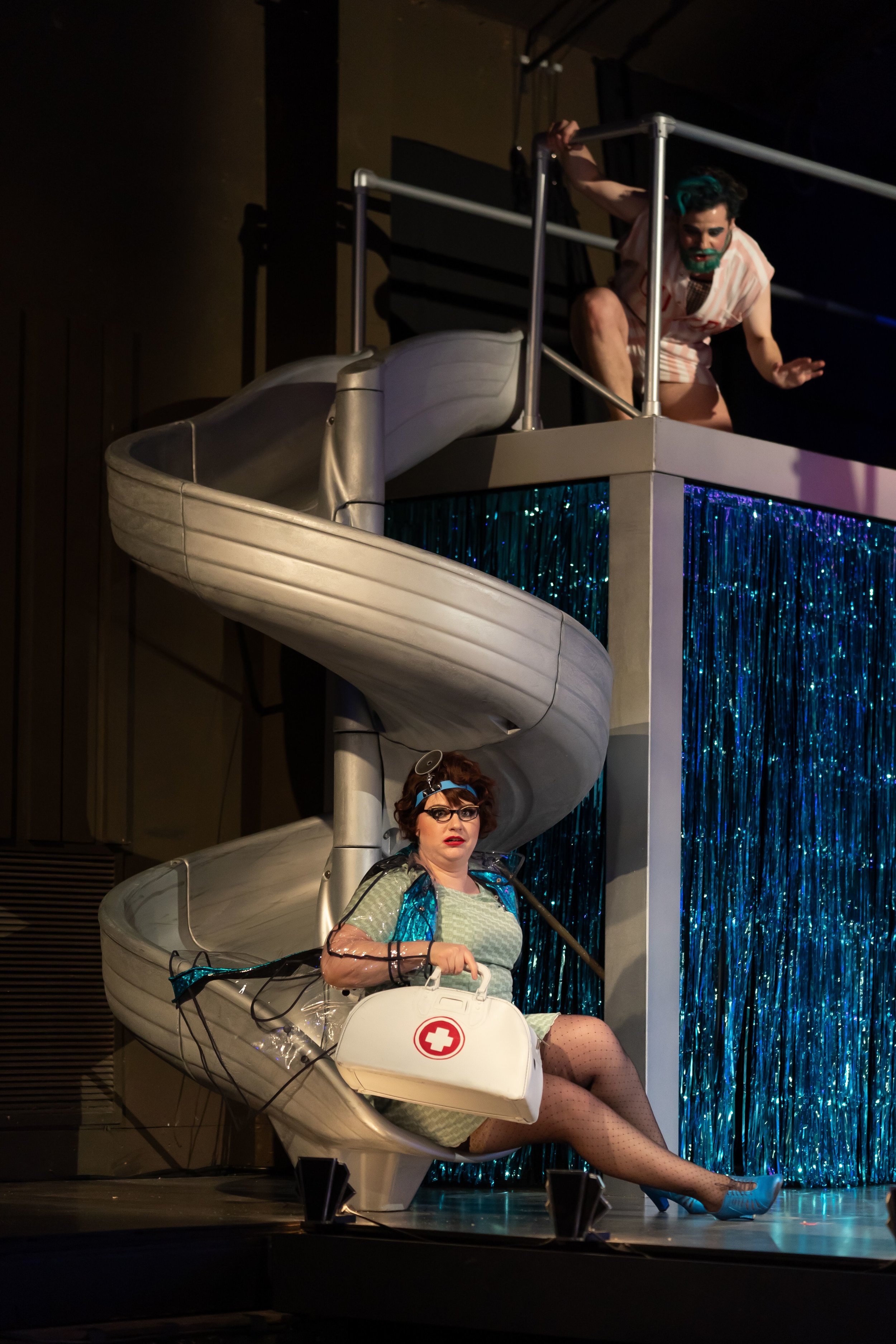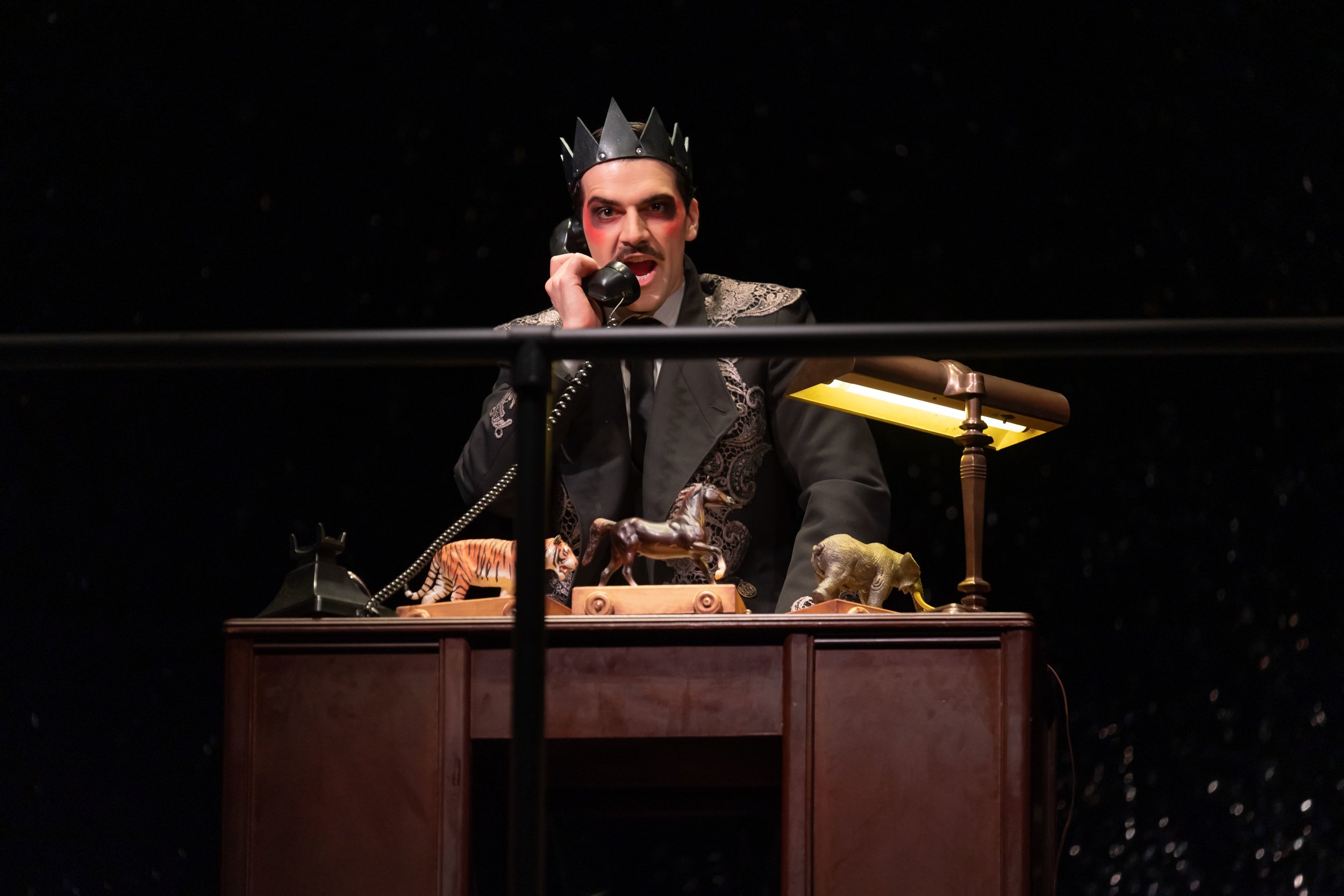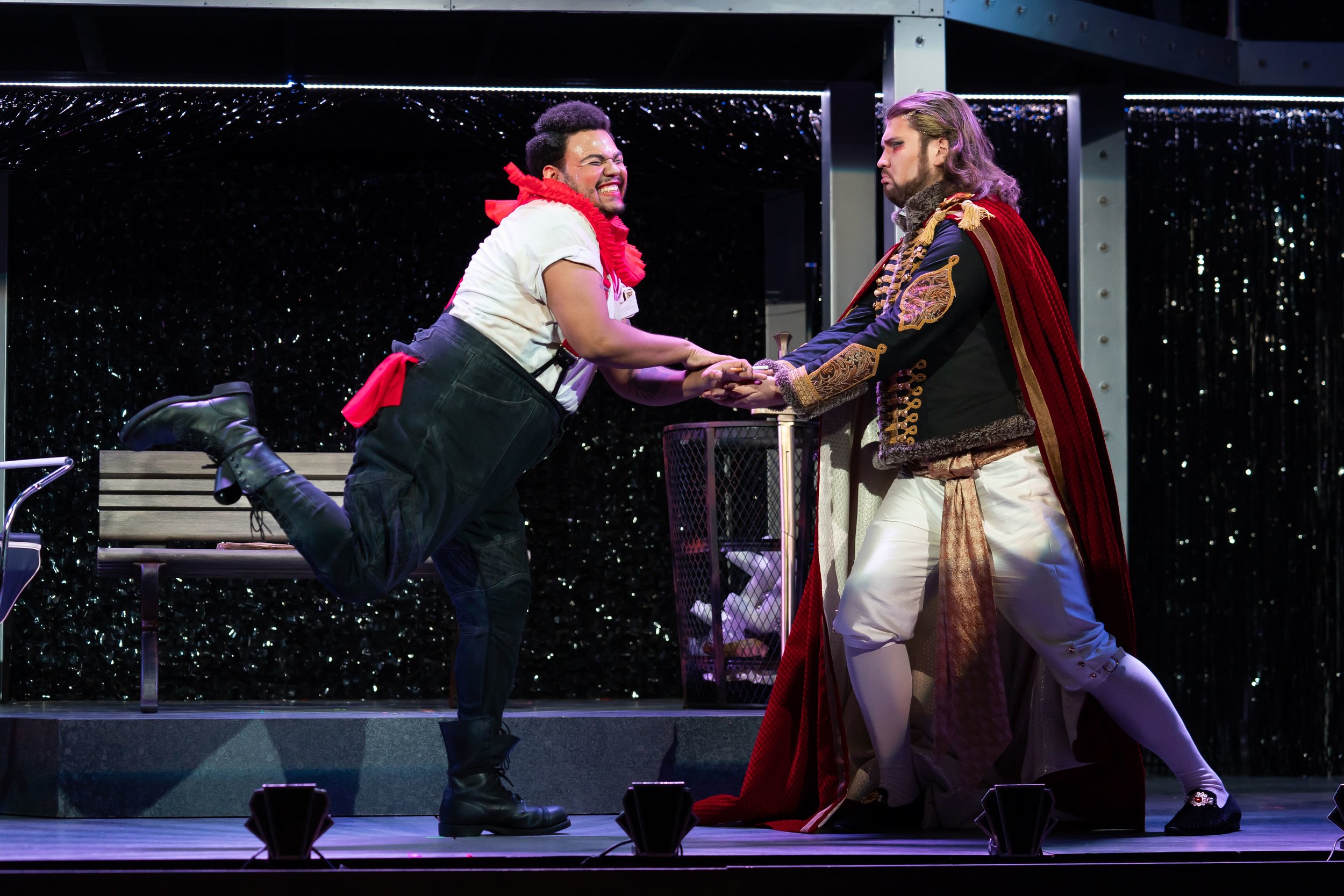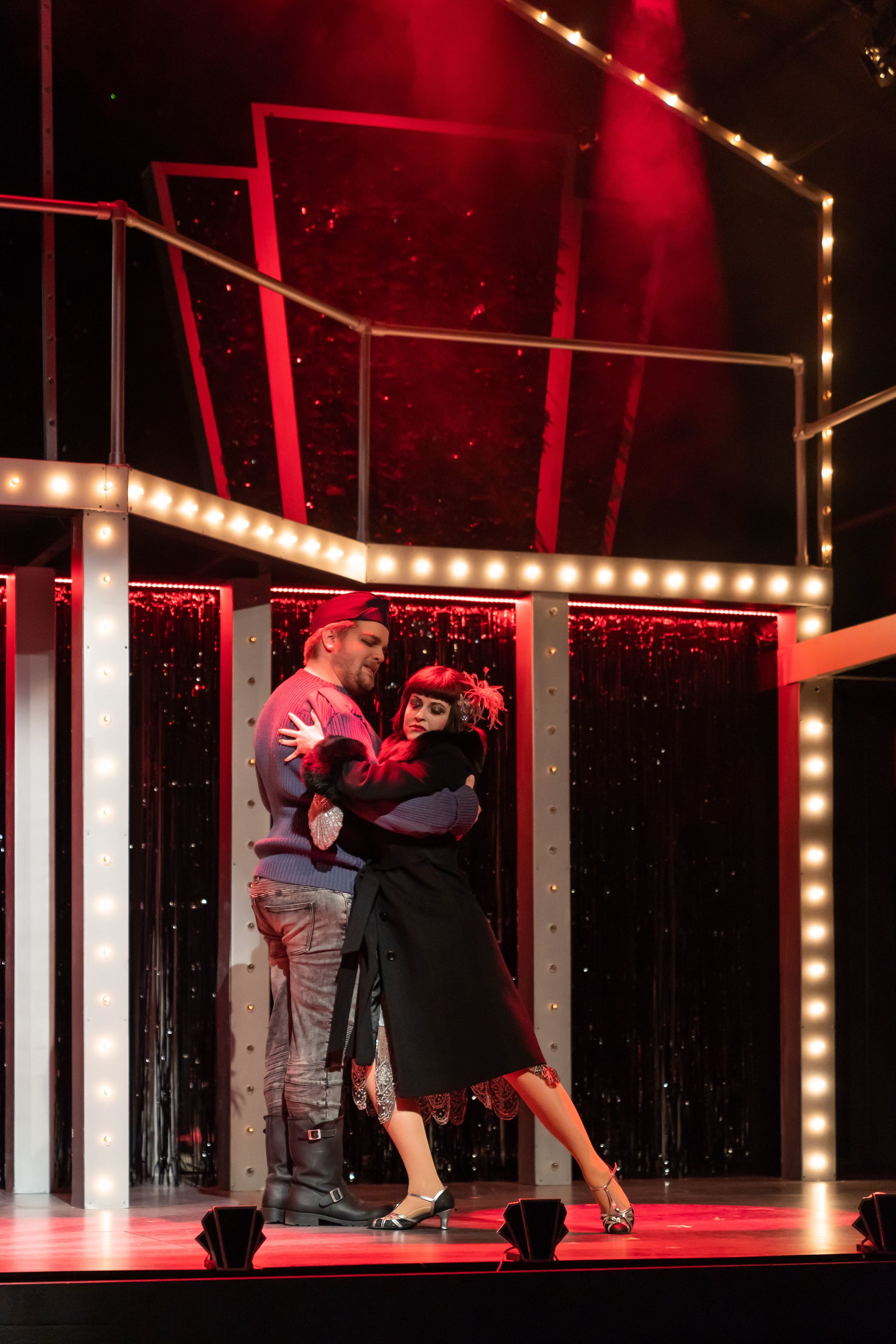Some alternate lead headers I might have used:
“Strong Cast Carries an Entertaining Otello”
“Verdi’s Mature Composition Style Amazes”
So, why lead with a comment about a detail, a handkerchief which Iago portrays as evidence that Desdemona has been unfaithful to Otello? There is a scene in WNO’s season opening production of Giuseppe Verdi’s Otello where Iago tells Otello to pay attention to Desdemona’s handkerchief and there is a titter of laughter in the audience. Librettist Arrigo Boito did not write a funny line or scene, so why does the audience laugh? There were laughs in a few other moments as well. I think the audience response is the predictable result of presenting a work well known to opera fans, based on a Shakespearean play well known by virtually everyone. The irony in certain lines becomes amusing when we know well the storylines of the opera and its conclusion. The line has become a victim of familiarity and the passage of time. Nevertheless, it creates a stumble for the audience’s immersion in the drama. It is a clear sign that the telling of the story is wanting for a modern audience.
Desdemona (Leah Crocetto), center, and a fearful Cyprian crowd peer through the storm for Otello’s ship. Photo by Scott Suchman; courtesy of Washington National Opera.
Director David Alden’s set and staging compound this fundamental limitation with a set and staging that struck me as baffling. The bare grey walls with a surprisingly displaceable back wall provided a plain set, which apparently was designed to help propel the sound out into the audience, a laudable objective in the design, but otherwise lacked features that might add to the story telling. The locking of arms of the chorus during the storm scene seemed odd to me and the strong lights creating shadows of the singers throughout the opera were distracting. Later, there was inexplicably a hole in the floor for fires. The set and the costumes were supposed to be moved forward in time, unclear to what time period or for what purpose. A solo dancer (Claudio Agüero Mariño) gave an engaging provocative dance that seemed to have little to do with the story. I will simply say that neither the set nor staging worked to draw me into the drama. Let me also add that my son’s reaction was different. At intermission when I asked him what he thought of the staging, he replied that it was cool; it was an expressionistic staging he enjoyed. Old school, new school? And only in opera could Desdemona sing a gentle closing aria after being smoothered to death. I will also add that having the couple on the floor made it difficult to tell what Otello had actually done to her.
General Otello (Russell Thomas) arrives victorius. Photo by Scott Suchman; courtesy of Washington National Opera.
I have been talking details. The bottom-line question is did the opera work to entertain and to engage the audience in its emotion and in thought provoking ways. For me, the answer to that question is mostly yes. The love scene between Otello and Desdemona was touching and convincing that these two were deeply into one another, though how readily he came to suspect her was disconcerting. Racial issues were not played up that might help explain his behavior. Desdemona’s highlight scene near the end with only her maid present was also affecting. Iago came across as a sociopath serving as both narrator and manipulator with occasional ego driven outbursts, but I felt repulsion, not fascination with him. I want to investigate how other singers have played Iago; so, the production did make me think. My bottom line is that I found Otello to be an enjoyable show which had some affecting scenes, though I was never truly immersed in the drama overall. So, let’s examine its best features.
Ensign Iago (George Gagnidze) puts into play a scheme to connect Desdemona to Captain Cassio (Zach Borichevsky) and anger an envious Roderigo (Alexander McKissick) looking on. Photo by Scott Suchman; courtesy of Washington National Opera.
WNO’s Otello has an excellent cast, that coupled with Verdi’s music, made the drama work at some level and provided beautiful sound the entire evening. In his pre-opera talk, Kennedy Center Artistic Administrator Colin Brush stated that Russell Thomas was one of only a handful of tenors in the world who could sing the vocally demanding role of Otello. I greatly enjoyed his performance, likely one not to be missed. Also adding greatly to my enjoyment was George Gagnidze as Iago, a role he is known for internationally. His highly polished baritone serves the characterization of Iago well. Soprano Leah Crocetto has become a favorite of mine. Her ability to sing softly conveying tender emotion is remarkable, and then as she demonstrated in her penultimate scene with only her maid present, she can bring it when a surge of emotion or power is called for. The minor roles were well played by mezzo-soprano Deborah Nansteel as Emilia, tenor Zach Borichevsky as Cassio, tenor Alexander McKissick as Roderigo (in an out of place dandy costume), baritone Hunter Enoch as Montano, and bass Wei Wu as Lodovico. I especially enjoyed the singing of Mr. Borichevsky. I would definitely go to hear this cast again.
Desdemona (Leah Crocetto) and Otello (Russell Thomas) are rapturously reunited. Photo by Scott Suchman; courtesy of Washington National Opera.
Now let’s get to the primary reason to go to see Otello, the music. I remain amazed by Verdi’s music in Otello. This music is unlike the music in Verdi’s other operas that I have seen. The opening storm scene most reminds me of Verdi’s Requiem for its dramatic impact. Otello is Verdi’s penultimate opera out of 28 in total. He came out of self-imposed retirement to compose it, and he deliberately made it different in style from his earlier works. It is what musicologists call “through composed”. The Italian style to that point was to compose operas made up of emotional arias separated by recitative, sung dialog. The arias were based on melodies that were developed with repeating segments. The melodies and themes often returned and were further developed. Not so in Otello where melodies lead to melodies and there is no demarcation between arias and recitative. You will not likely go home humming melodies from arias from this one, but this is not a criticism in the case of Otello. Here is the amazing part: despite its lack of memorable arias, the music is beautiful and engaging. And by using this form, the story is propelled without a break, more Wagner-like, or sort of like a Stephen Spielberg movie. Kudos to Conductor Daniele Callegari and the WNO Orchestra for effectively bringing this music to life. A major player in Otello is the chorus which was outstanding; kudos to Chorus Master Steven Gathman.
Otello’s (Russell Thomas) jealous anger erupts against Desdemona (Leah Crocetto). Photo by Scott Suchman; courtesy of Washington National Opera.
WNO’s Otello has much to like and maybe you will agree with my son on the staging. It is a highly entertaining evening, more fun than affecting, with a story we all know by heart now. I predict you will be glad you didn’t miss this one, though to be truly engaging as drama, future directors will have to find a way to eliminate the audience response of laughter. My representative line from this production would then have been “that damn handkerchief” not “that darn handkerchief”.
Related: OperaGene’s preview of Washington National Opera’s 2019-2020 season can be found at this link.
The Fan Experience: Otello plays five more times - October 30, November 3, 8, 11, and 16; sung in Italian with projected English subtitles. One of the perks of attending the opening night performance was to witness the arrival of opera fan and Supreme Court justice Ruth Bader Ginsburg, who elicited her usual spontaneous standing ovation - very neat! I thought the audience singing was particularly impassioned this time while the national anthem was played. As mentioned above, Kennedy Center Artistic Administrator Colin Brush gives a 30-minute pre-opera talk one hour before the performance. The talk provided history and insights that enhanced my experience of the opera, some of which I have infused into this blog report.
I finally tried one of the special sippy cups you can purchase to hold a drink bought at intermission. At $4 added on to the cost of the beverage, it is a little expensive, but it does allow you to relax and not worry about getting your cocktail downed before intermission ends since it can be taken into the Opera House. For the first time, the Kennedy Center Red Bus was not waiting at the Foggy Bottom Metro stop when I arrived, so I made the easy ten-minute walk to KC. I then saw one headed to the metro stop while walking in. My wife managed to drive from Reston, leaving work at 6 pm and arriving to her seat ten minutes before the 7 pm performance.






